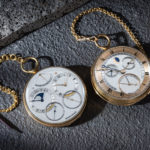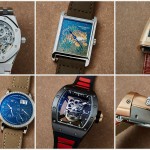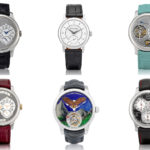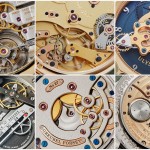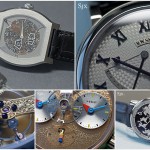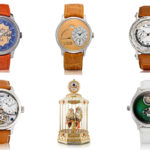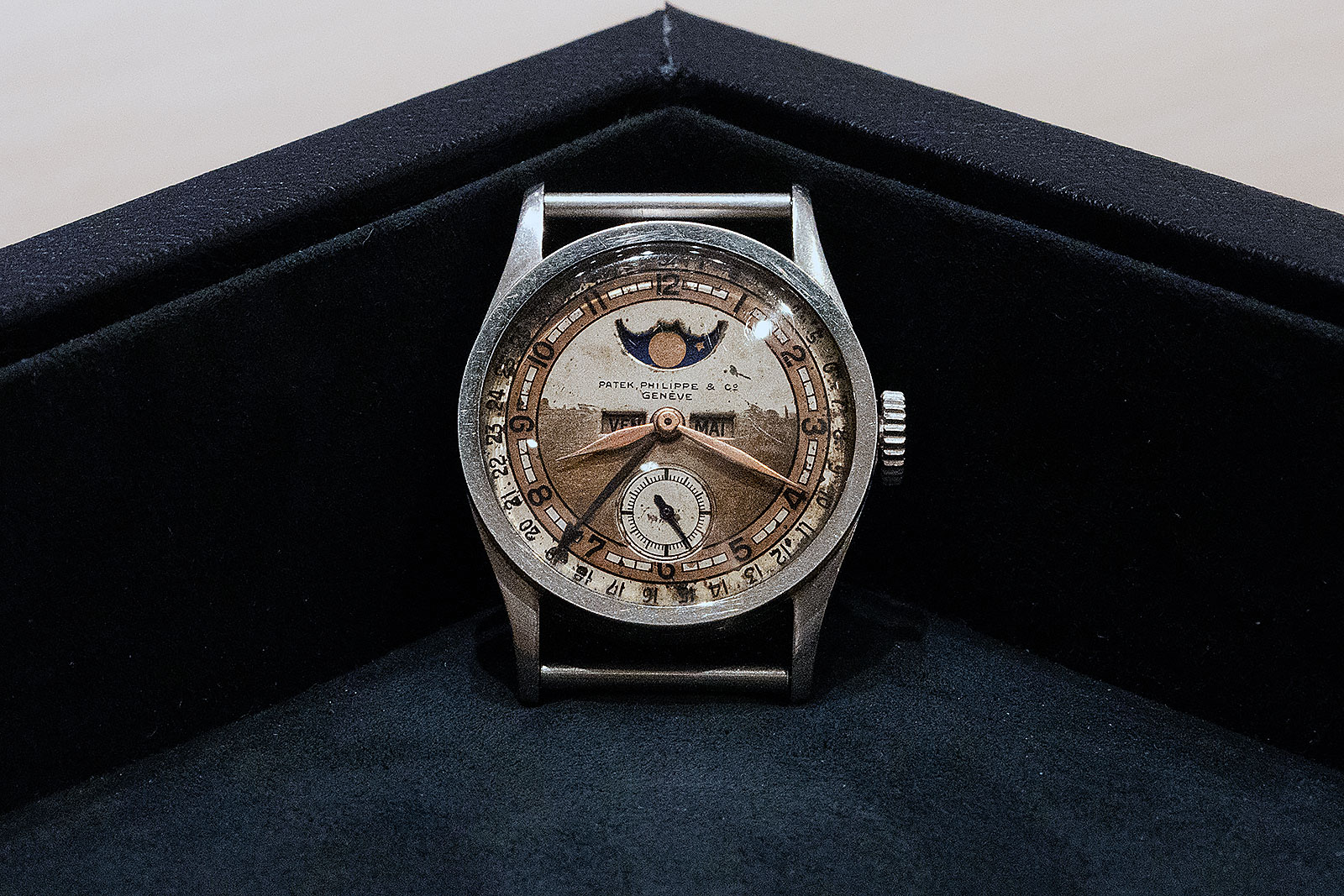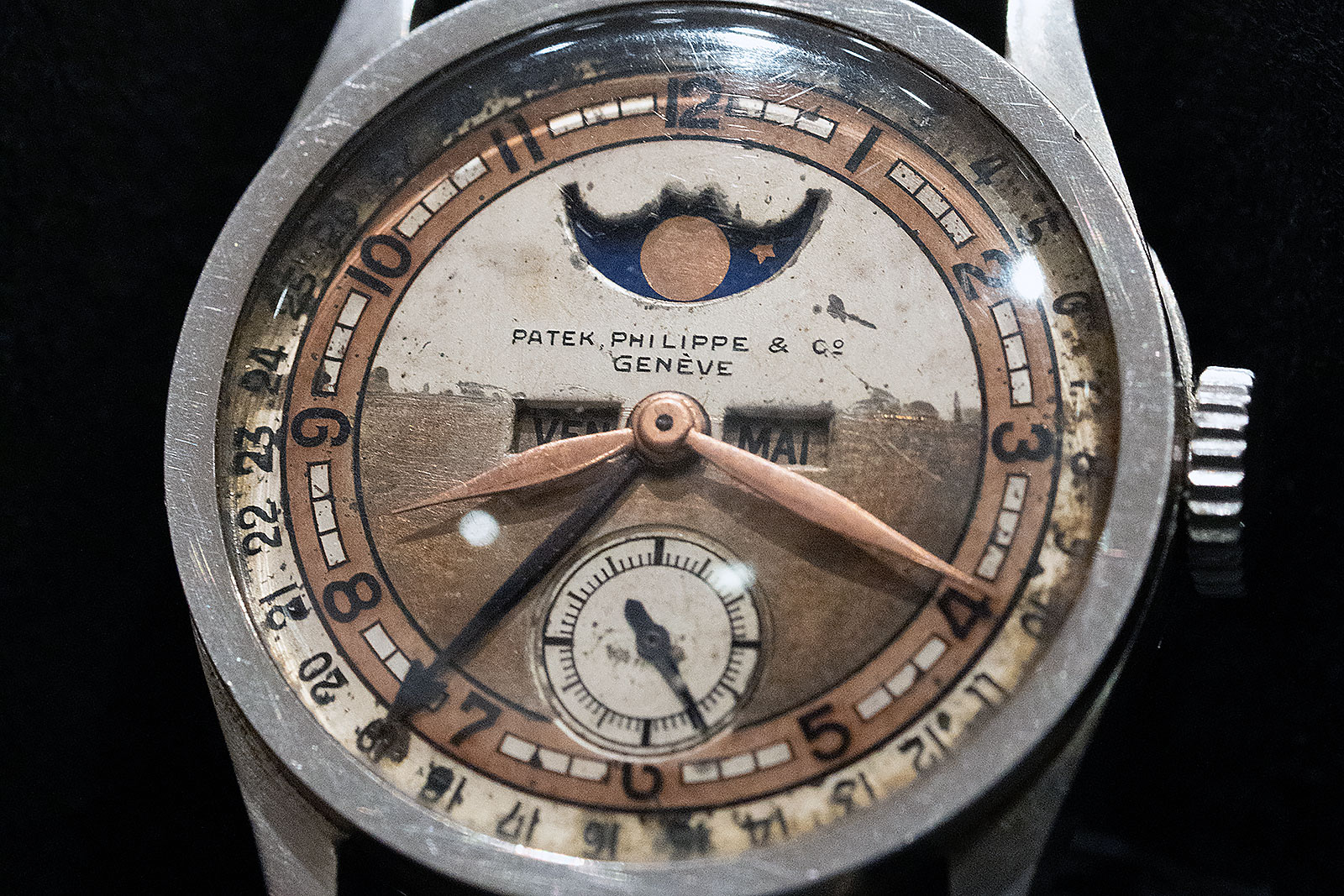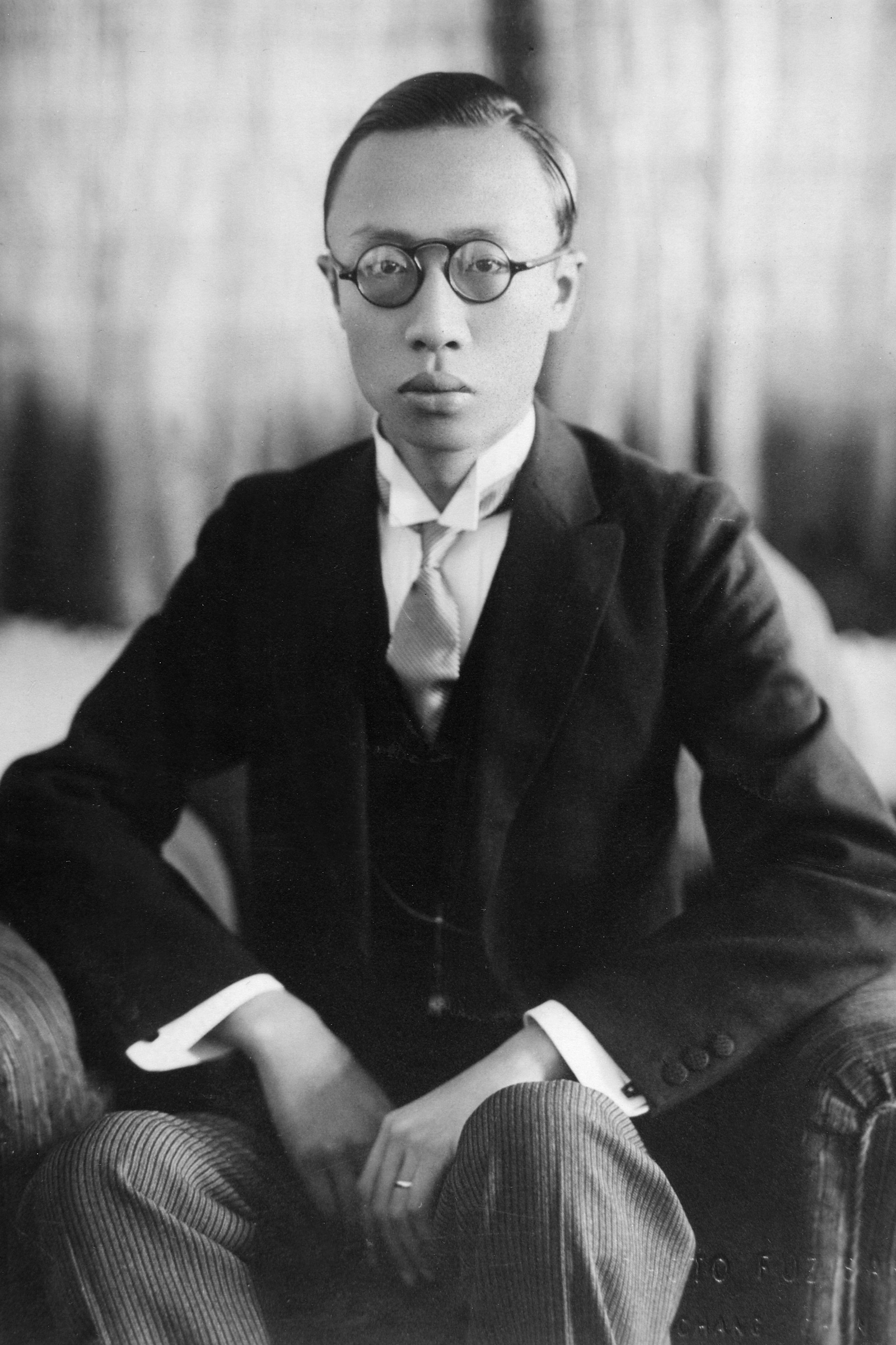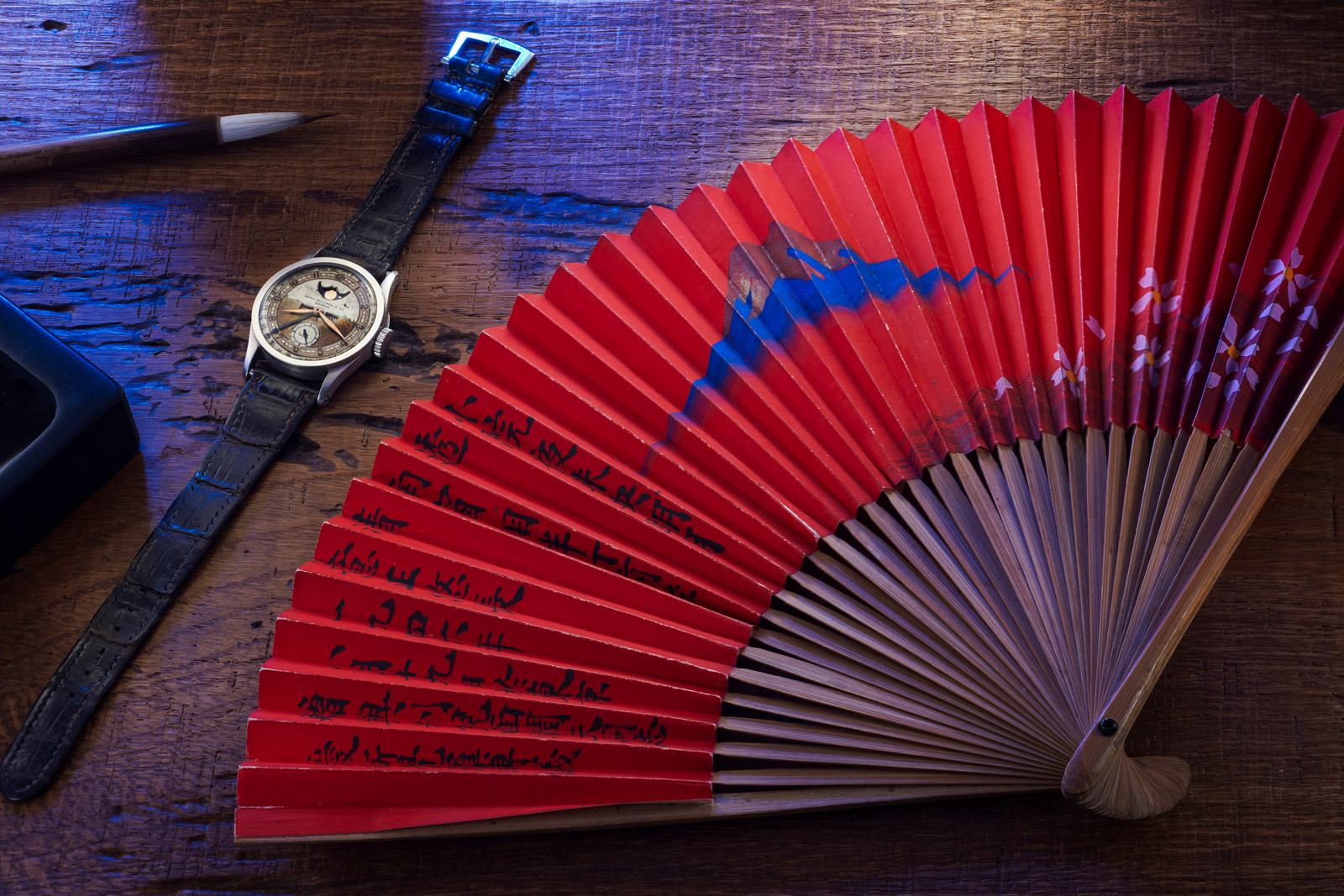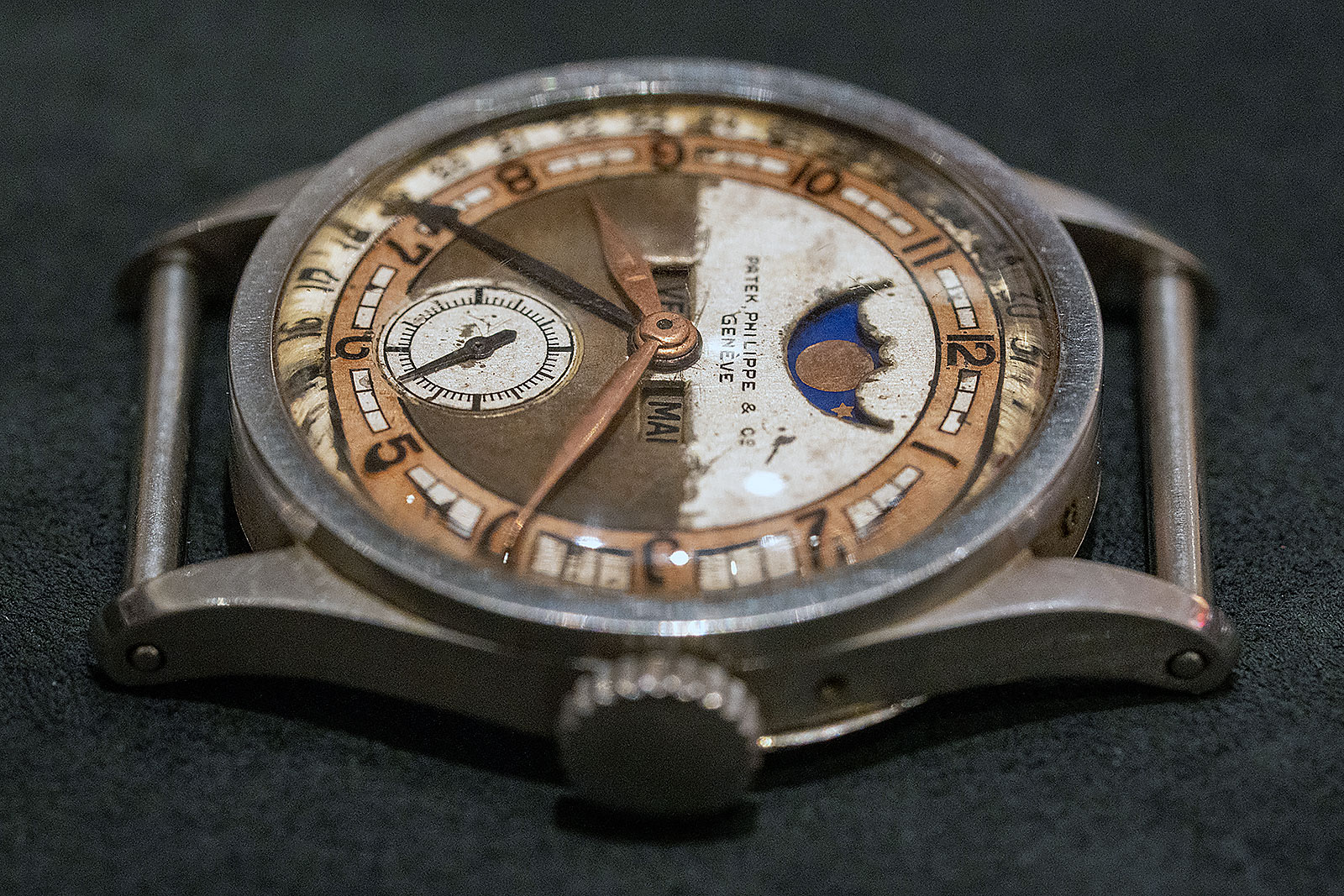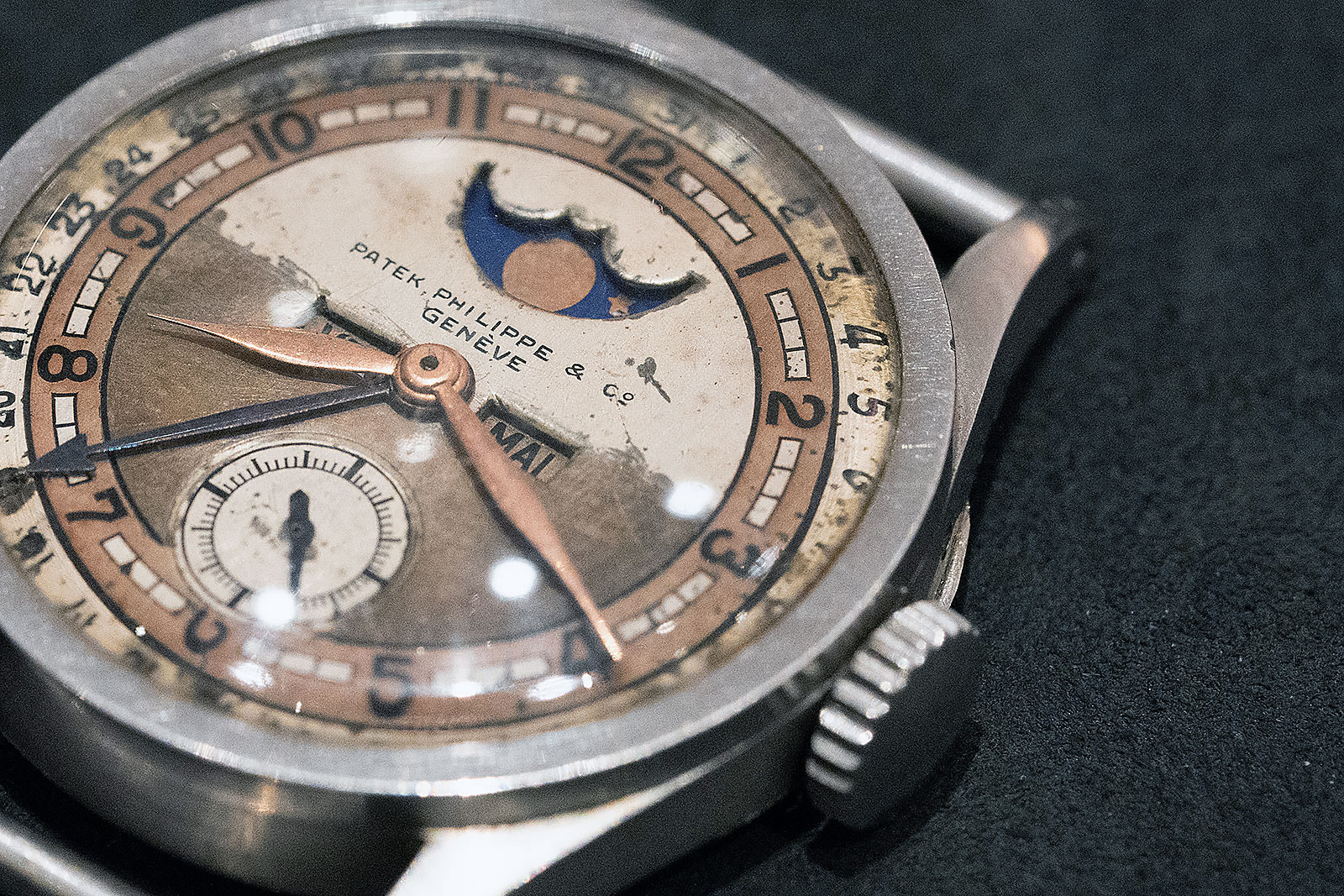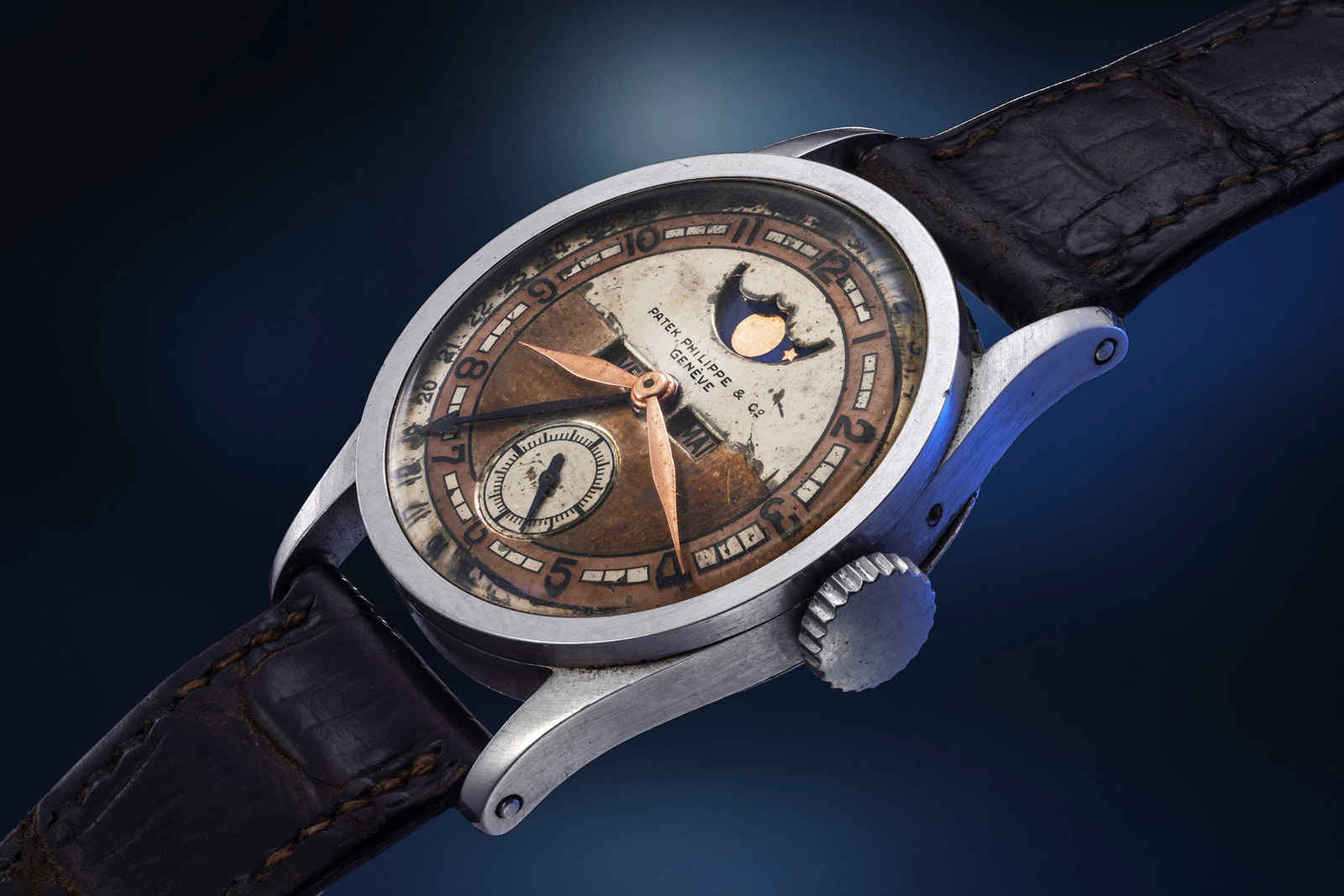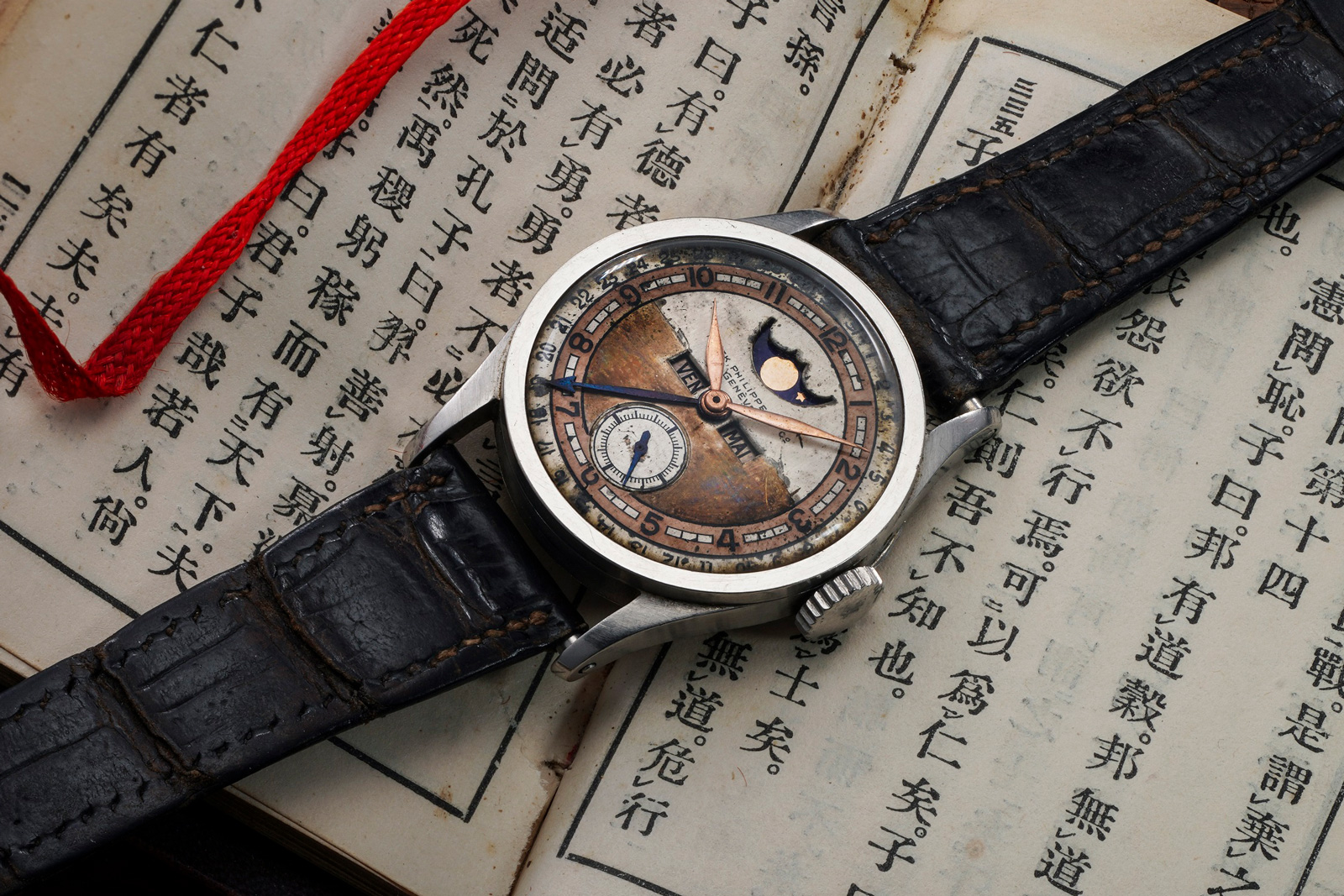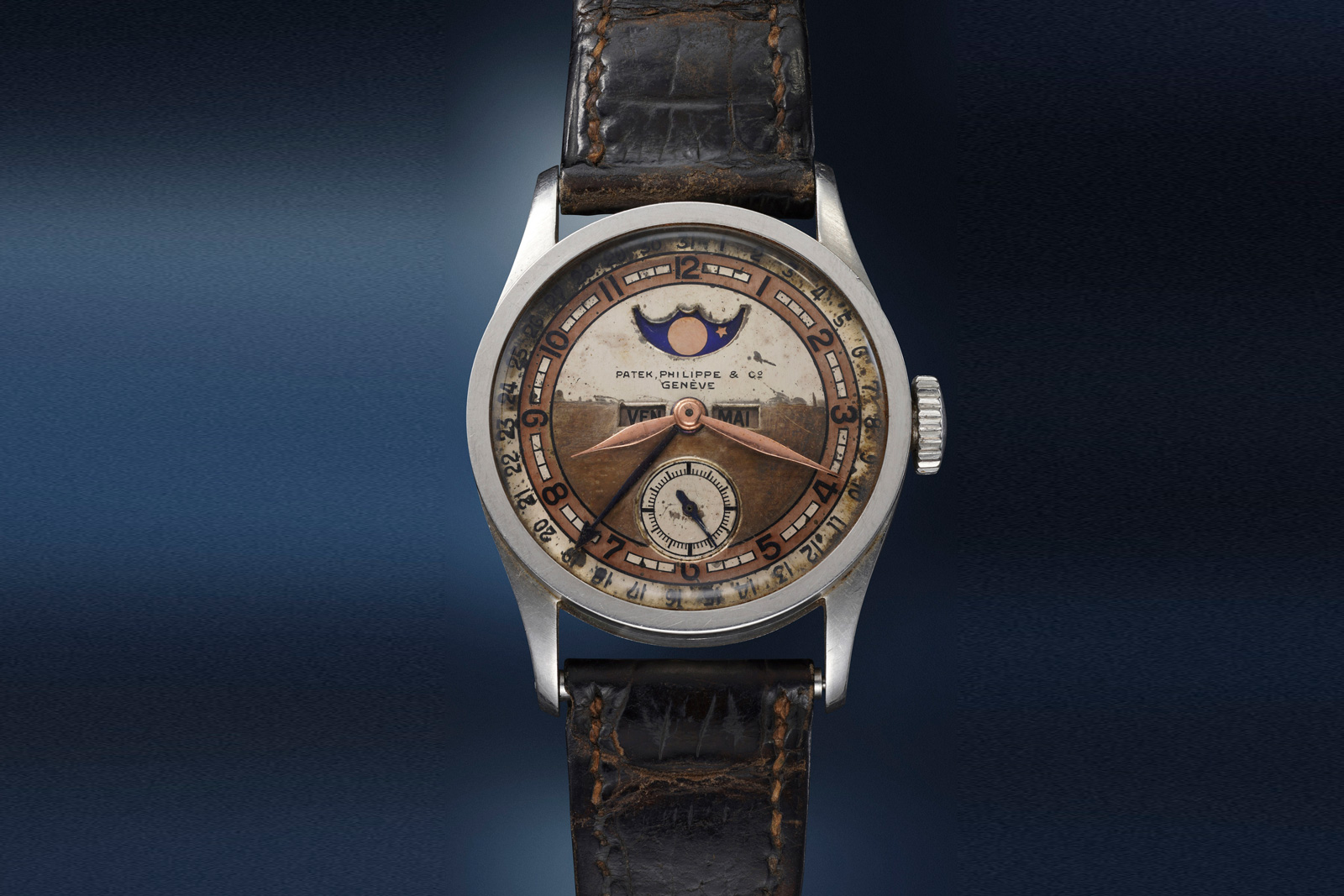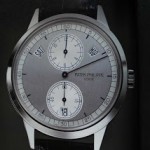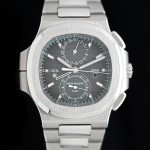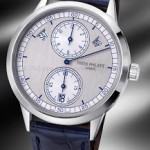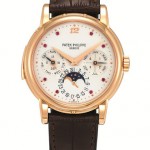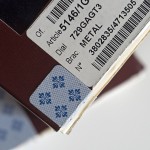Highlights: Independent Watchmaking at Sotheby’s Hong Kong
Heavy hitters and some playful pieces.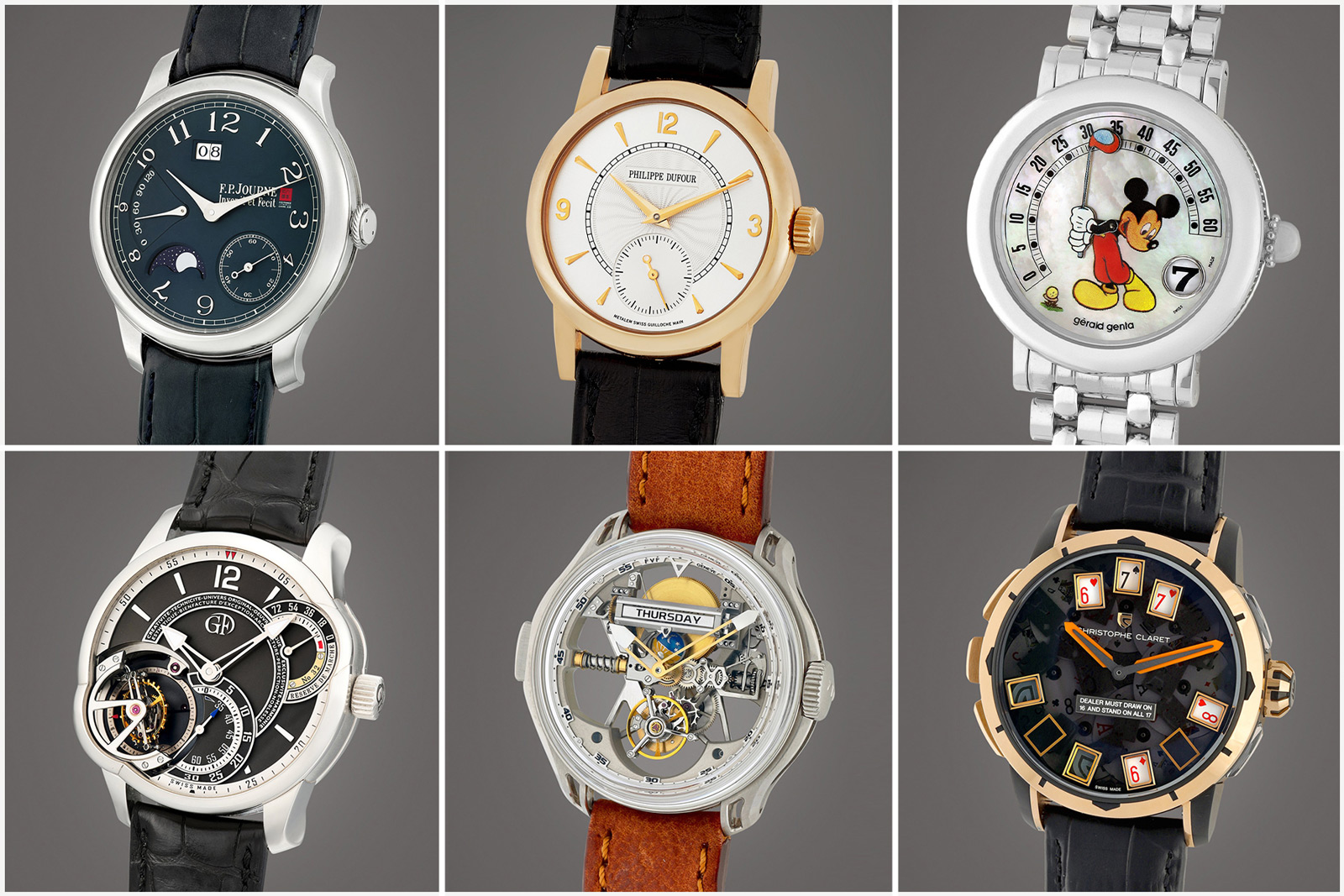
Beginning in early April, Sotheby’s spring sale season in Hong Kong also marks the auctioneer’s 50th anniversary in Asia. One of the headline sales is Important Watches I, a 210-lot sale that spans notable complications, artisanal decoration, and of course, independent watchmaking.
The indie line up includes heavy hitters from the likes of F.P. Journe, Richard Mille, and Philippe Dufour, but also a few potential value buys such as the Christophe Claret Blackjack 21. And in the mix are some surprises, like the FVF Tourbillon Superligero.
The auction takes place on April 5, 2023. Registration for bidding and the full catalogue can be accessed here.
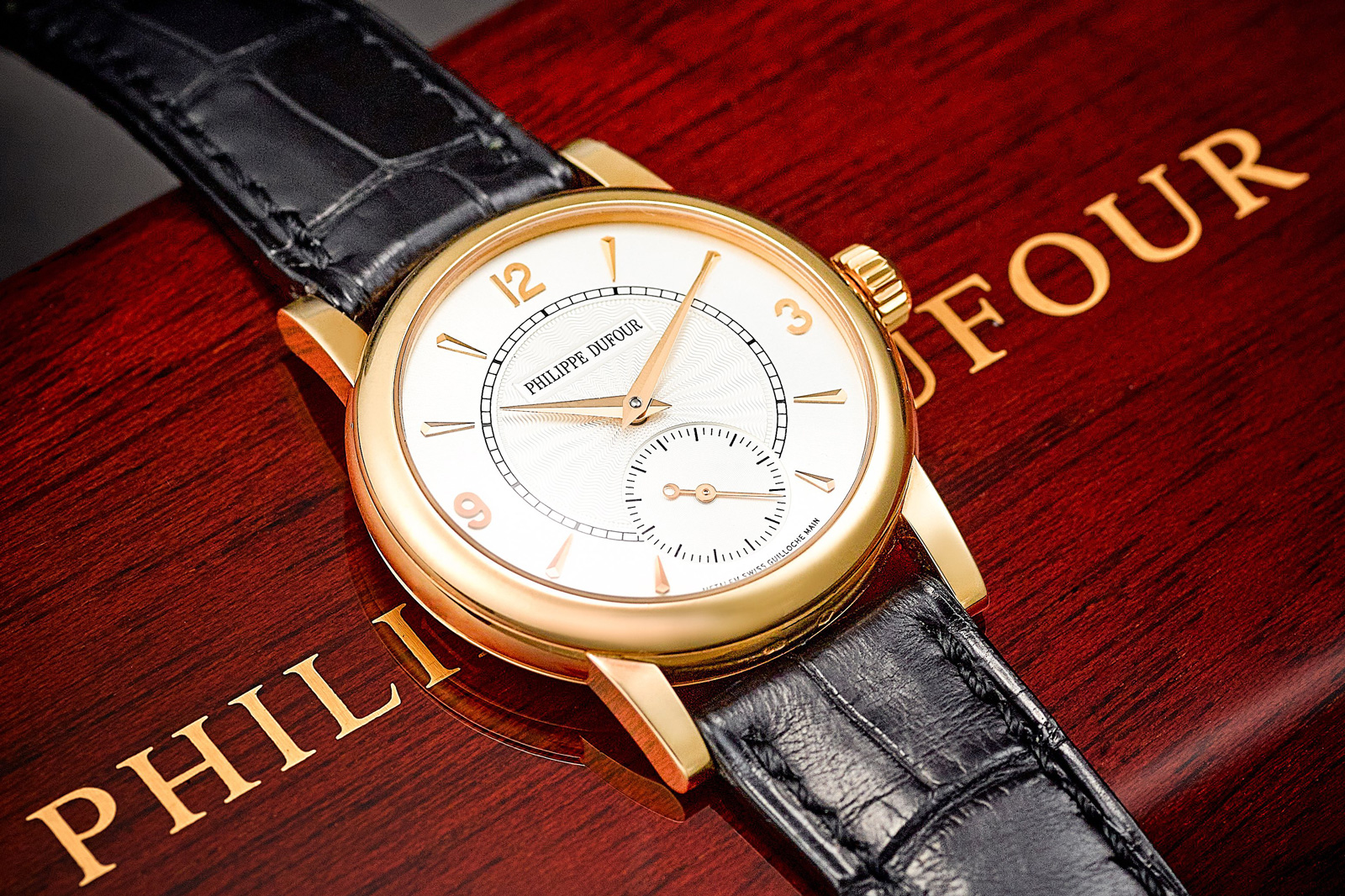
Lot 2101: Gérald Genta Fantasy Retro Mickey Mouse in 18k white gold
Gérald Genta was the first watch brand to place cartoon character in high-end watches, well before it became a fad amongst luxury watchmakers. The Fantasy collection depicted various Disney characters, usually combined with retrograde complications. Such watches are common enough that a few appear every auction season, but almost always in steel or occasionally yellow gold.
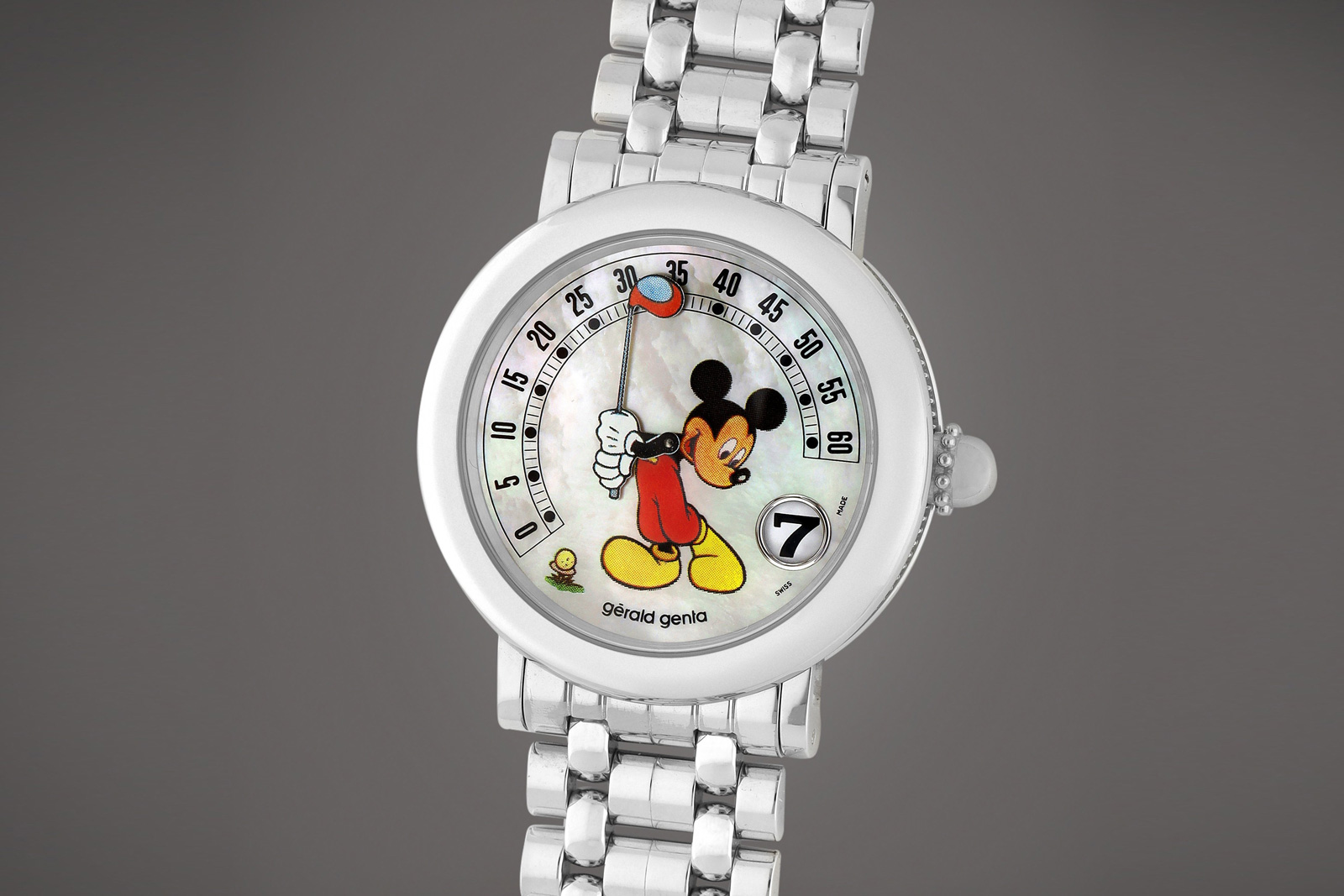
This example, surprisingly, is entirely in 18k white gold, case and bracelet, making it very uncommon. While it will pass for steel at a distance, the heft of the case and bracelet is a giveaway.
The case is 36 mm, compact by today’s standards but the typical size for a men’s watch in the 1990s and early 2000s. And the dial is mother of pearl – Genta was a pioneer in exotic dial materials – with Mickey Mouse enjoying a game of golf.
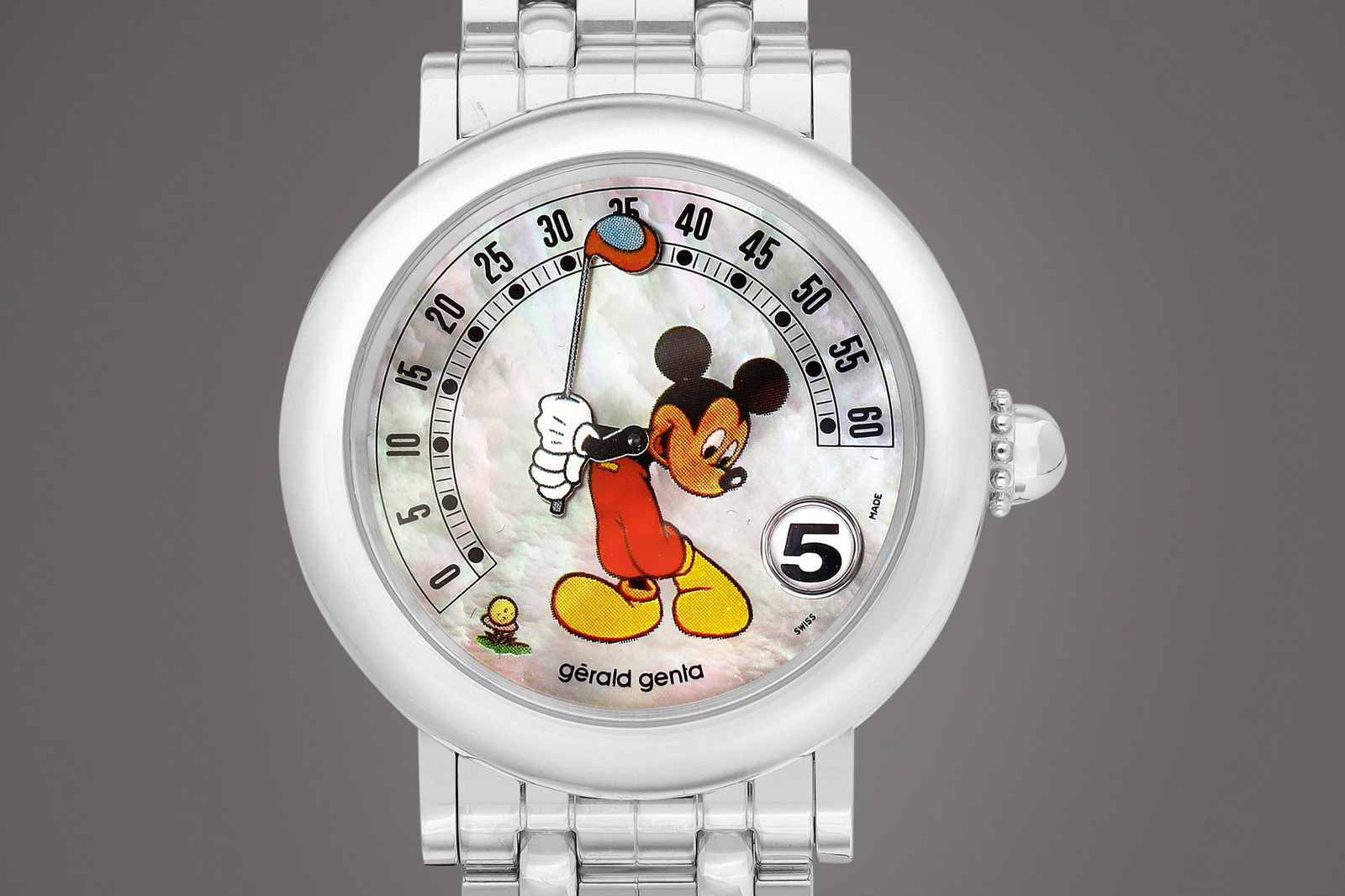
Like the rest of the Fantasy Retro watches, this is mechanically straightforward. It’s powered by an ETA movement with a Genta module on top. It indicates the minutes with a golf club wielded by Mickey, while hours are in a window at four o’clock.
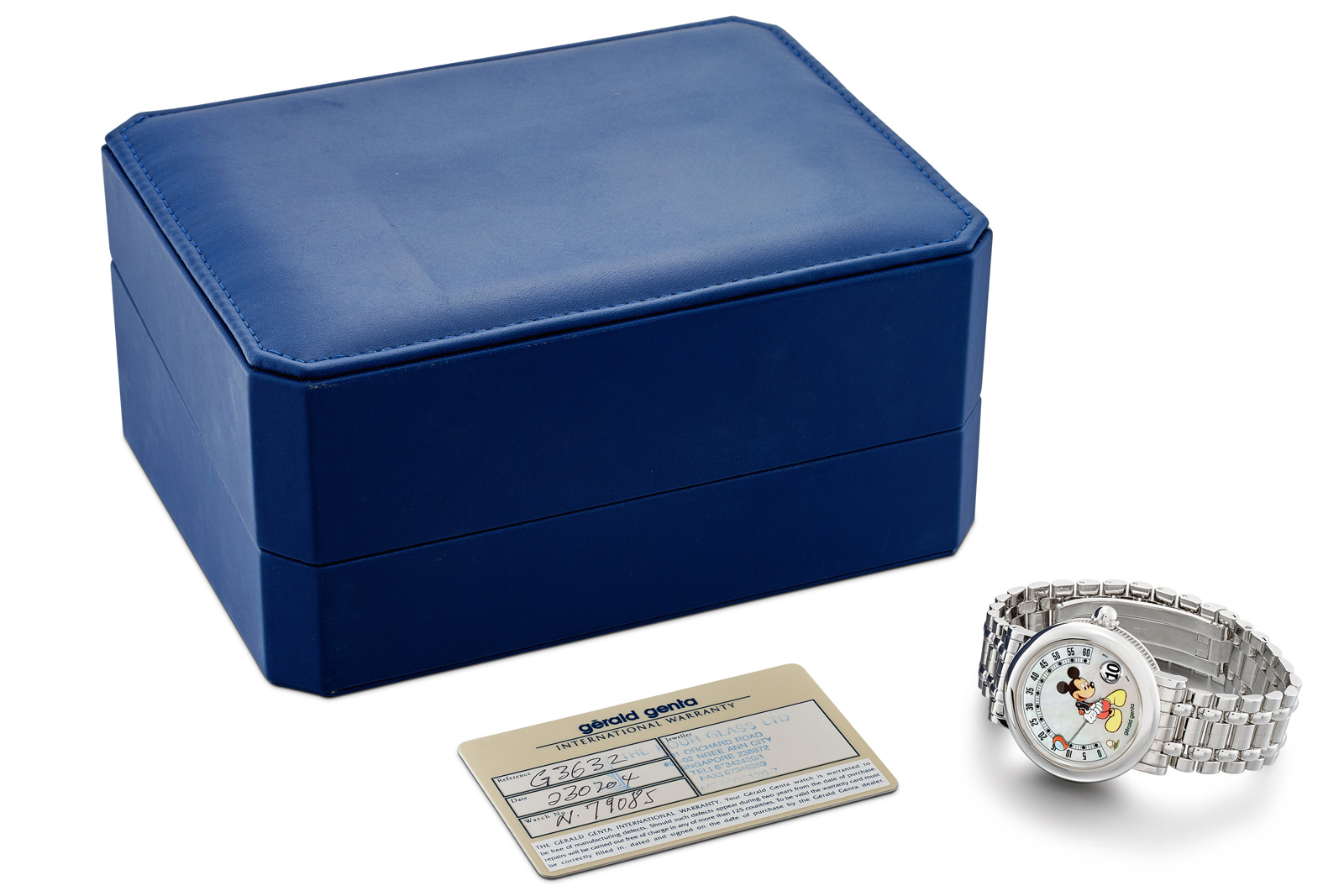
This watch retains the original warranty card dated 2004 and presentation box. It carries an estimate of HK$80,000-120,000, or about US$10,200-15,300.
You can find out more in the catalogue.
Lot 2144: FVF Tourbillon Superligero
The story of Franc Vila is one of failure and redemption: the Spaniard founded his namesake brand in 2005, riding the wave of demand for independent watchmaking during the period. His big and bold timepieces covered in materials like carbon fibre were perfect for the era. But like many highfliers of the period, the Franc Vila brand folded in the ensuring bust.
But Mr Vila made a comeback in 2018 with FVF, short for “Franc Villa Founder”. With FVF Mr Vila revealed a more cohesive vision and a certainly more thoughtful watch, the Tourbillon Superligero. Only a handful have been made to date, but this example has emerged at Sotheby’s.

The Tourbillon Superligero is a a distinctive watch that is all about the extensively open-worked movement that’s been constructed in in a near-symmetrical manner. It features a one-minute flying tourbillon at six o’clock, a heptagonal roller showing the day of the week at 12 o’clock, and in between the two, a spherical day and night indicator. And the calibre boasts an impressive 100-hour power reserve.
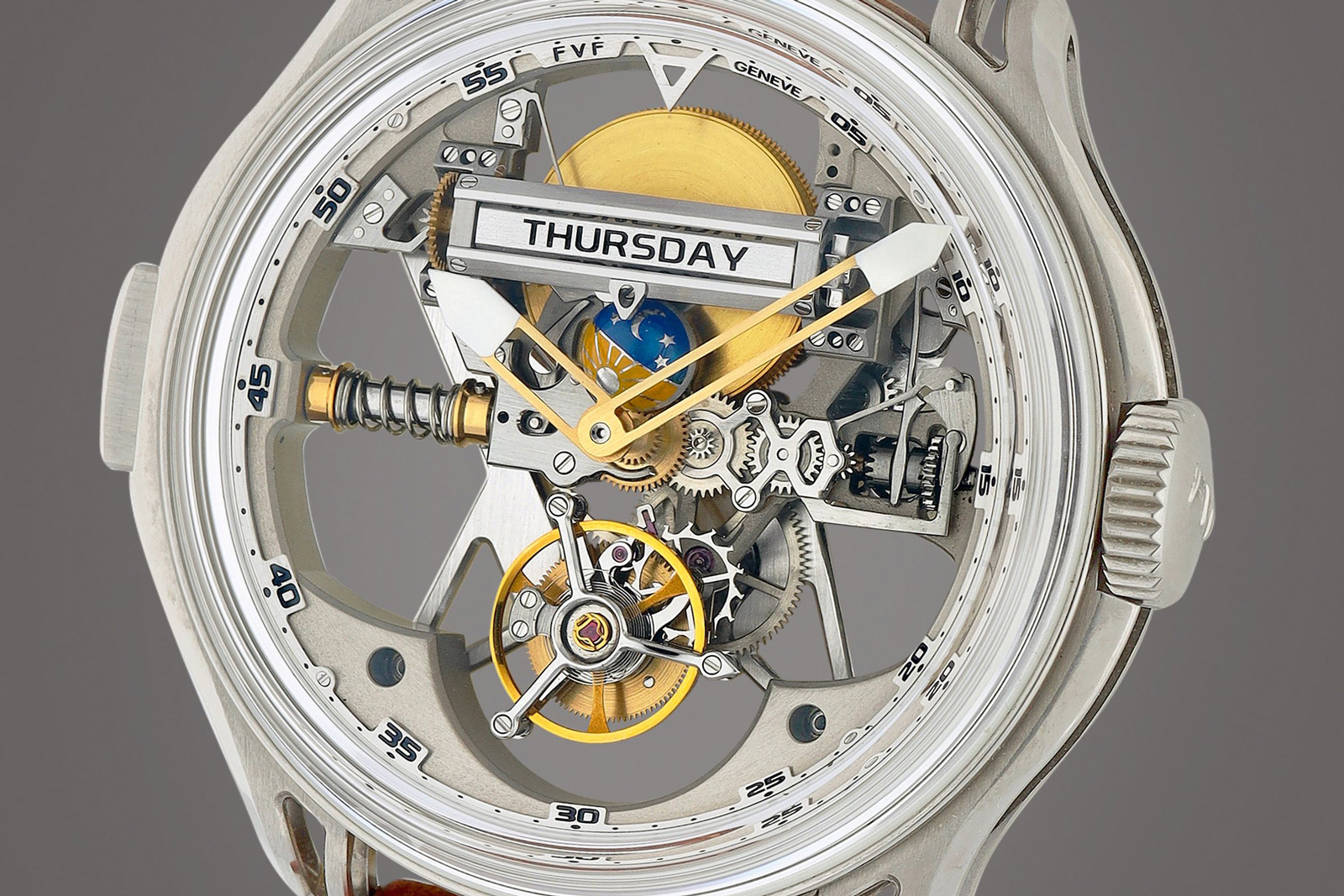
The titanium case is constructed with minimal metal: it’s essentially a case middle with tall sapphire crystals on both sides, allowing for a panoramic view of the movement. And it also ensures the watch is lightweight despite the size.
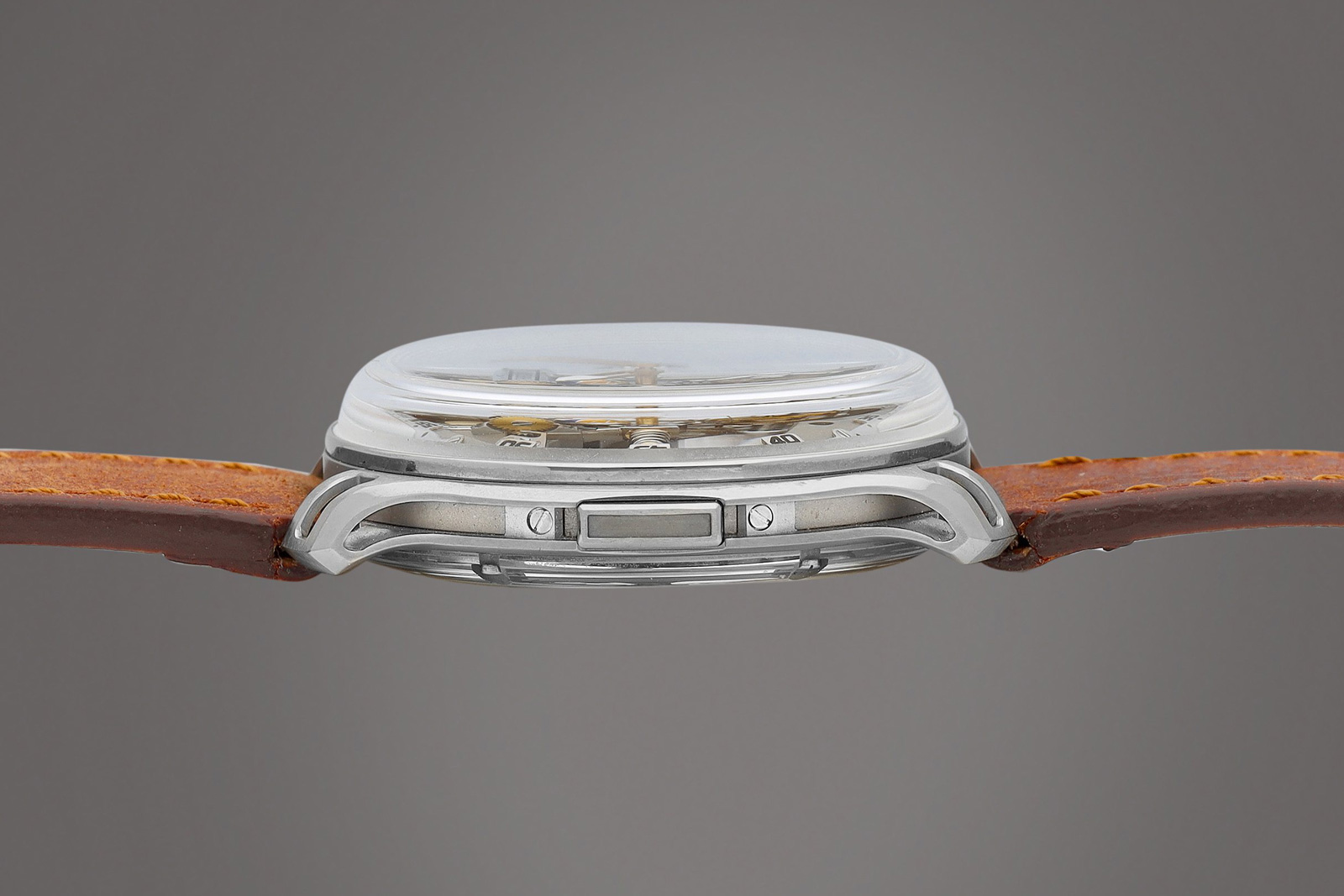
Despite the modern aesthetics, the FVF1 movement inside is decorated surprisingly well. In fact, the finishing is comparable to that of established, high-end brands like Vacheron Constantin and Chopard. This is especially evident on the “V” shaped base plate, which boasts prominent bevelling.
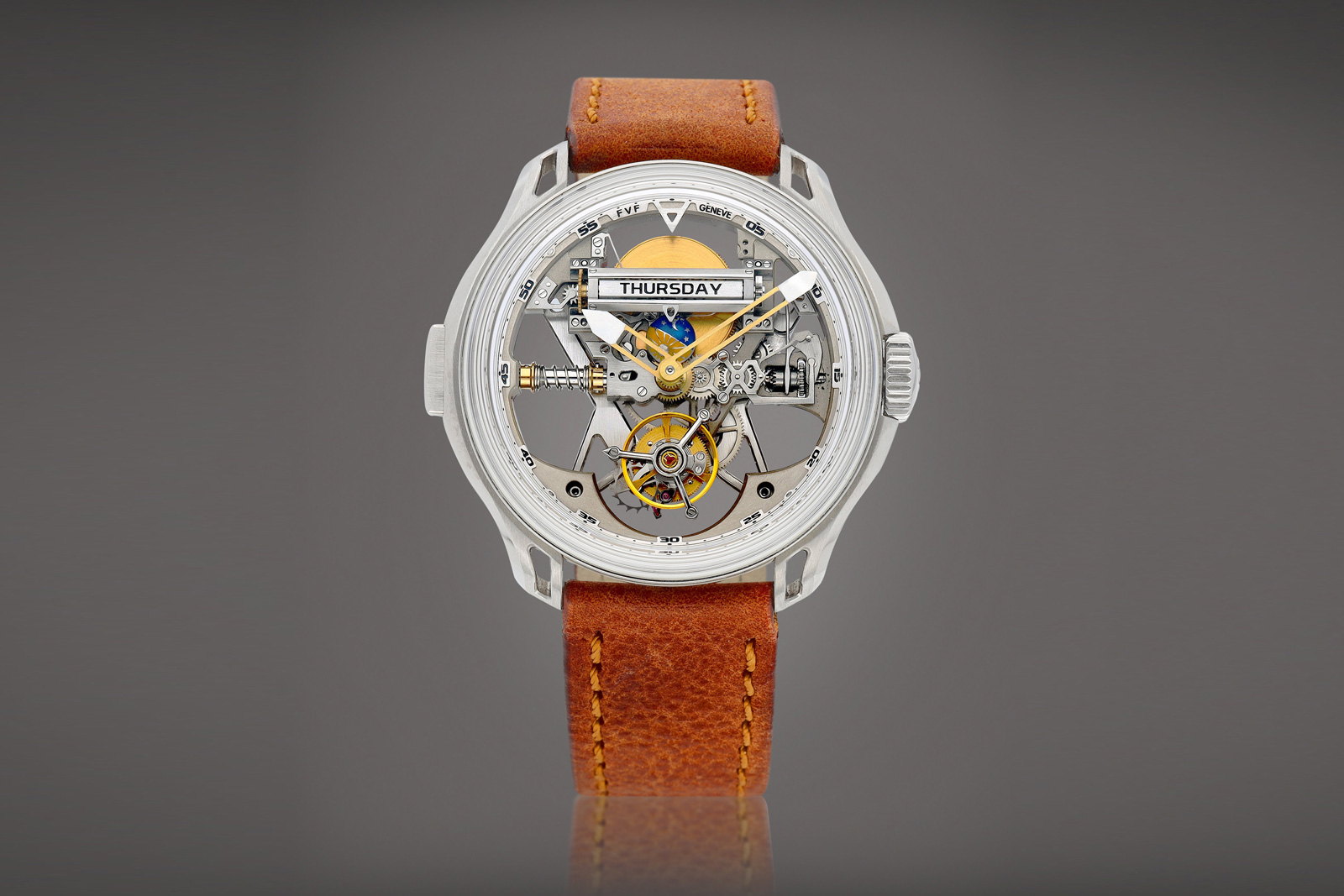
The FVF Tourbillon Superligero is accompanied by a carry-on suitcase and has an estimate of HK$240,000-400,000, or about US$30,600-51,000.
You can find out more in the catalogue.
Lot 2149: Gérald Genta Success Perpetual Calendar
While Gerald Genta is best known for the Audemars Piguet Royal Oak and Patek Philippe Nautilus, the late designer was more adventurous when it came to designs for his own brand, often experimenting with shapes and materials.
But unsurprisingly, one of his bestselling creations for his namesake brand was another octagonal watch, known as the Success. Like much else he designed, the Success was inspired by his fascination with sailing and maritime exploration. Its bezel is reminiscent of a ship’s wheel, while the crown brings to mind a diving helmet.

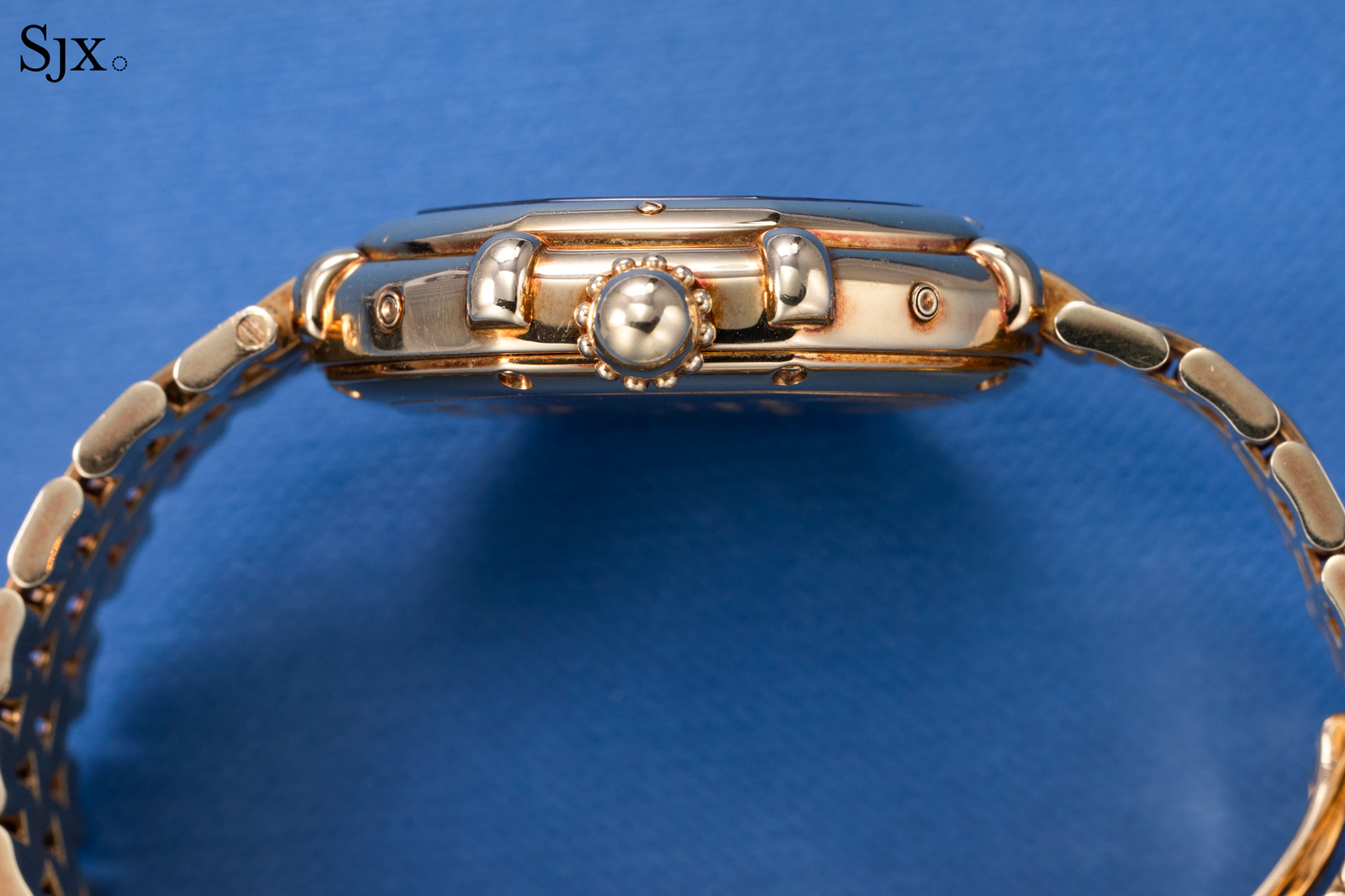
In the context of modern design the Success is an unconventional shape and also small at just 35 mm in diameter. But it is interesting while being good value considering the materials and complication.
This example is a quintessential Success model, featuring a perpetual calendar with moon phase. Like most other Genta watches of the period, the dial was crafted from unusual materials, including lapis lazuli for the moon phase disc, mother-of-pearl for the calendar rings, and carbon fibre for the dial itself.
The case on the other hand is retro: 18k yellow gold case matched with a five-link bracelet also in yellow gold. This example features a solid case back that hides the ultra-thin F. Piguet automatic movement within.
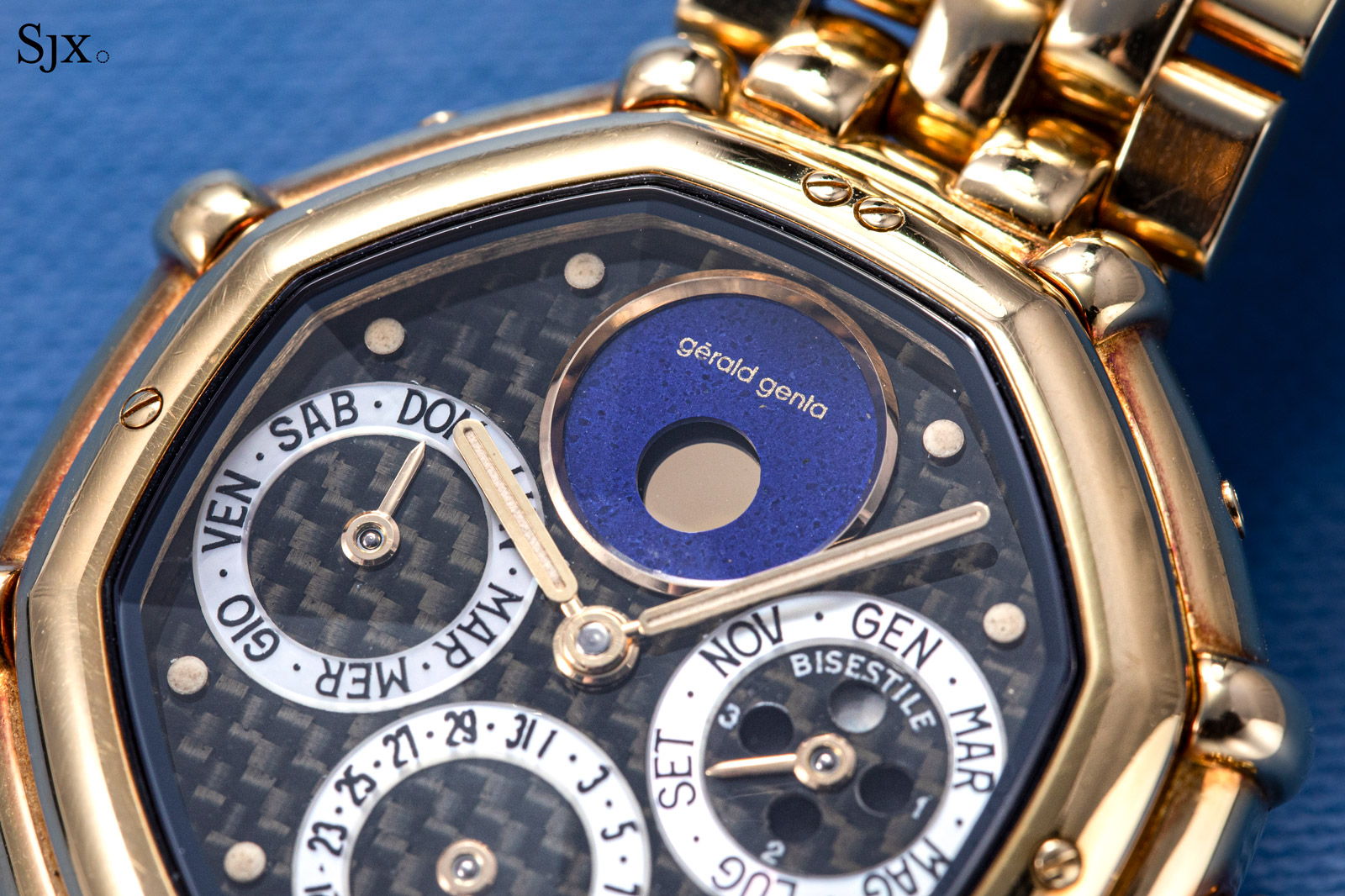
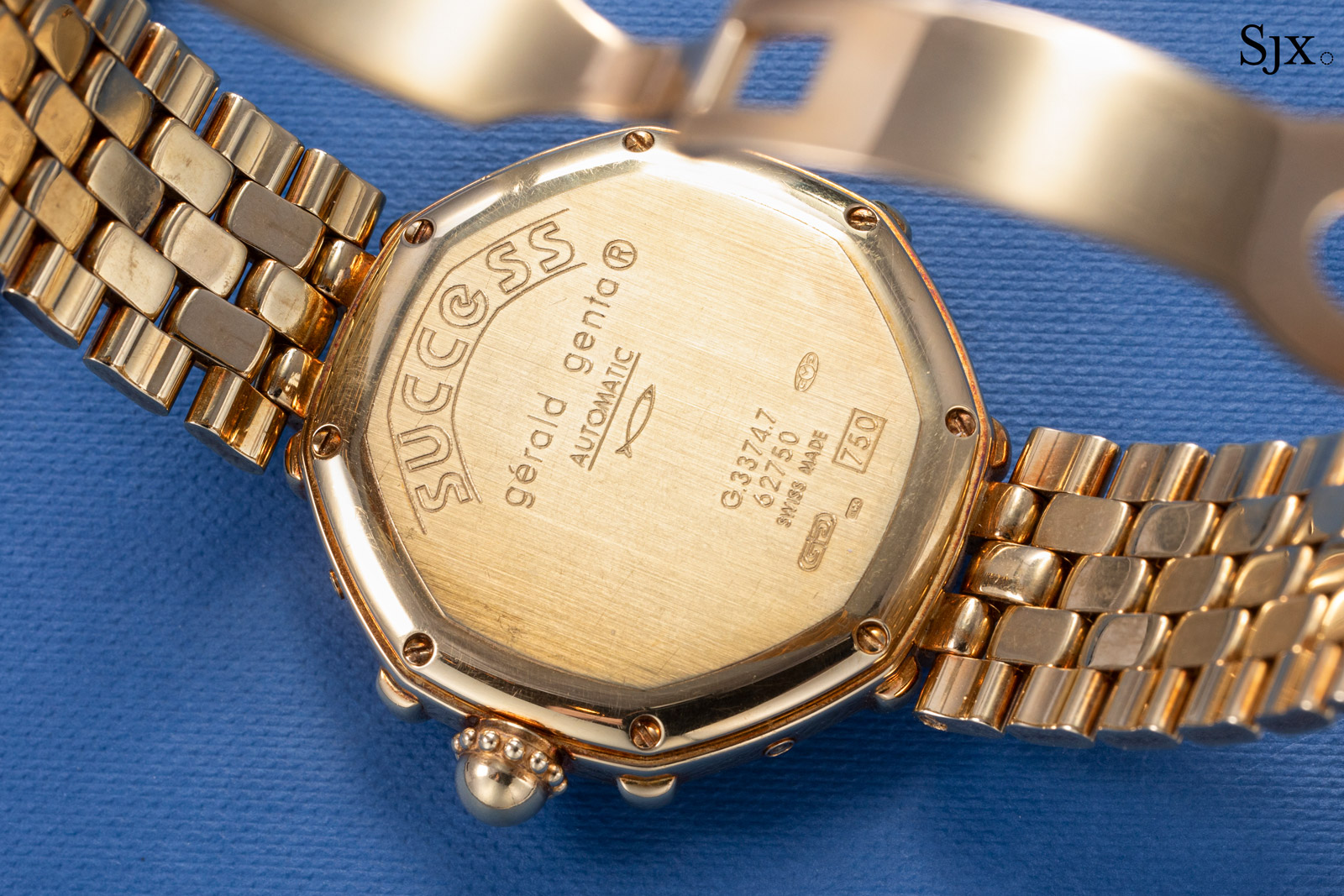
The lot is offered without any accessories and has an estimate of HK$50,000-100,000, or about US$6,400-12,740. For more, visit the catalogue entry.
Lot 2158: Greubel Forsey Tourbillon 24 Secondes Incliné
Greubel Forsey’s Tourbillon 24 Secondes Incliné is an ingenious reinterpretation of Abraham-Louis Breguet’s invention. By inclining the tourbillon at 25°, the movement is meant to average out the effects of gravity while the watch is in an ever-changing position due to it being on the wrist.
At the time of its launch in 2007, the inclined tourbillon was a bona fide novelty. To showcase the novelty, the case has a small windows on the case band to reveal the tourbillon profile. This example dates to 2010 and features a platinum case.
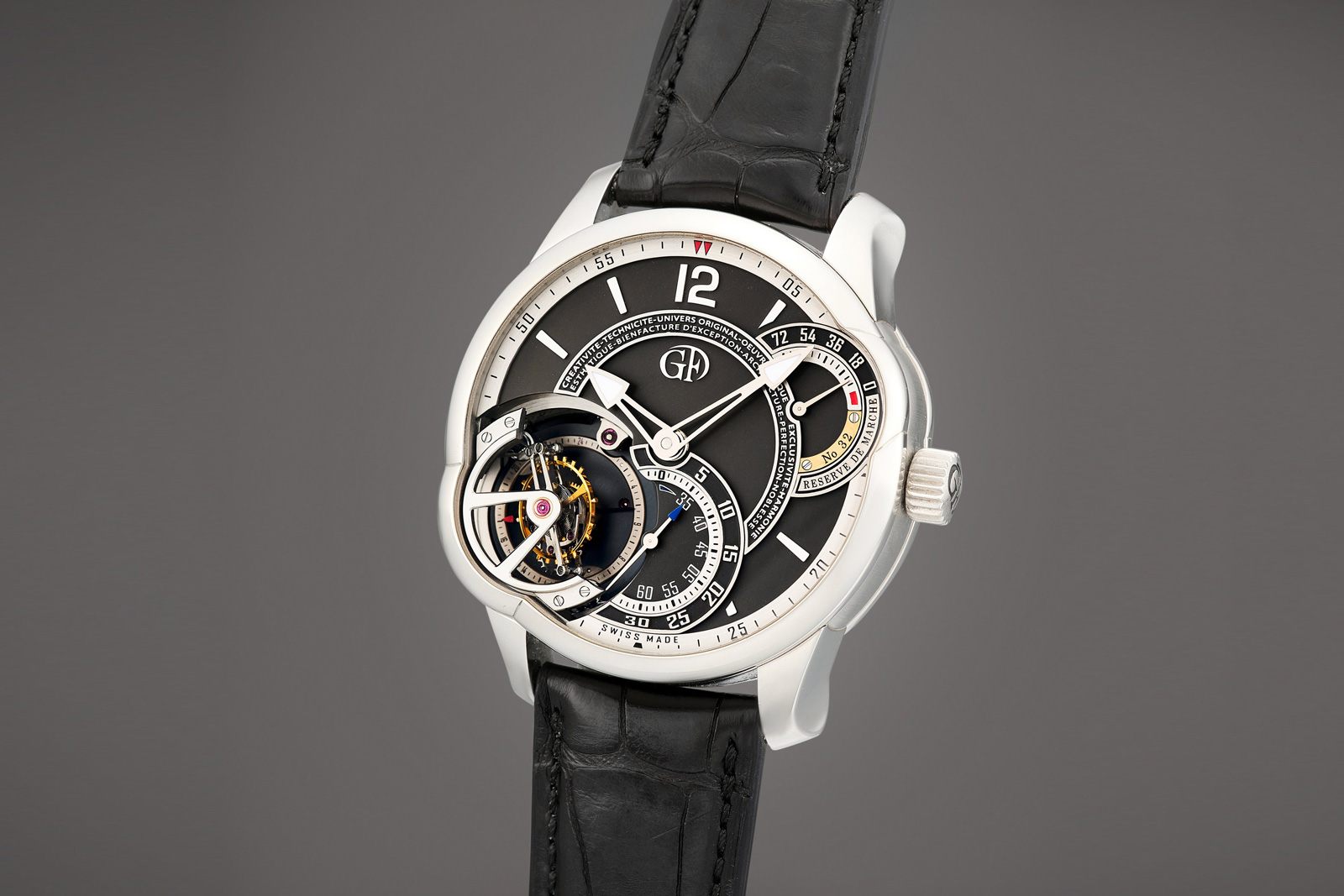
Though this is a later variant of the model, it retains almost all the design elements of the original, save for some additional decorative elements. The dark grey dial has the same layout as the original version, but gains the brand’s signature “micro” relief engraving with a ring around the dial that depicts the Greubel Forsey motto.
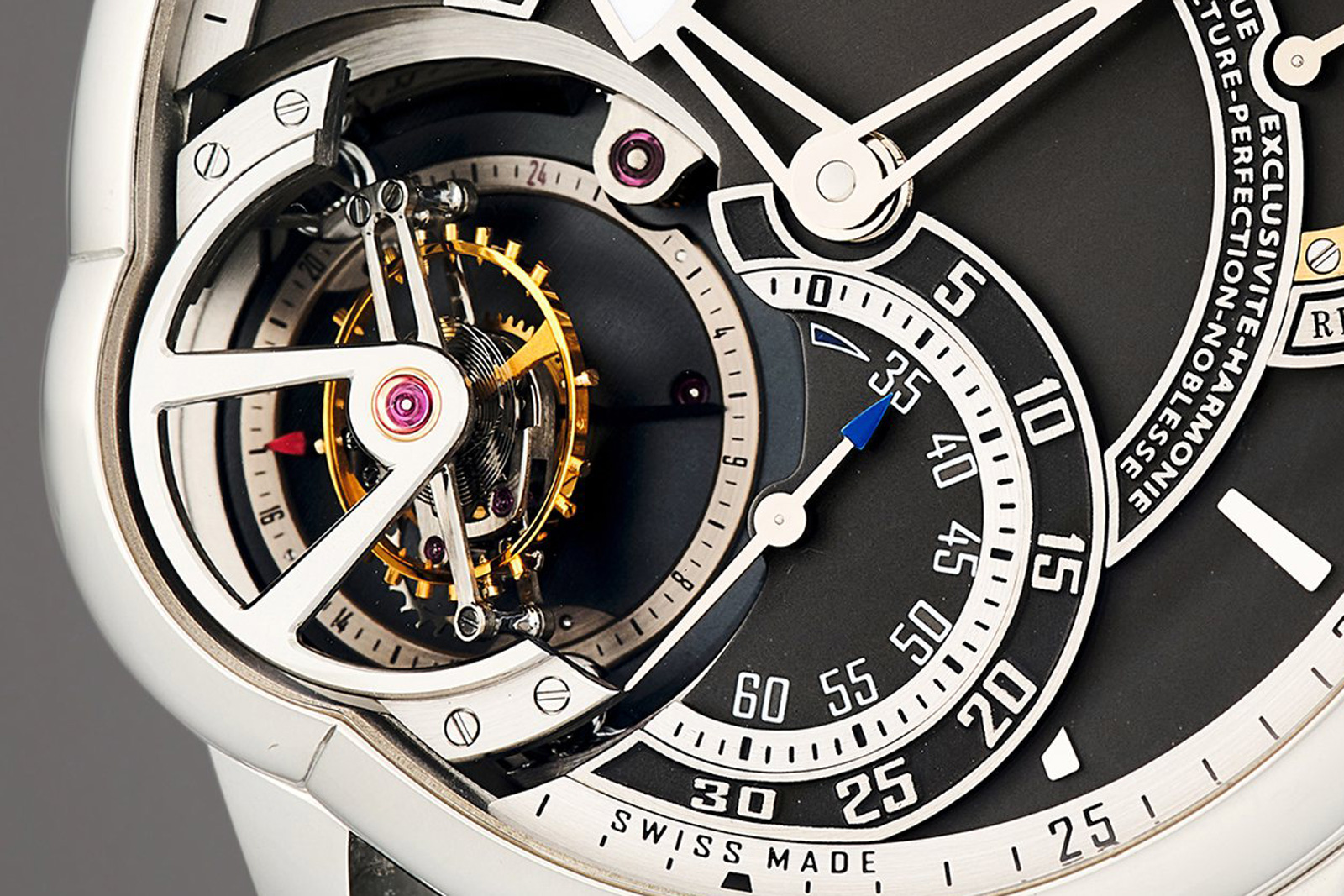
Inside is the cal. GF01, a manual-wind movement with twin, stacked barrels that provide a healthy power reserve of 72 hours. They incorporating a decoupling mechanism that prevents them from being overwound.
Like most Greubel Forsey movements, the calibre is characterised by frosted bridges, blued screws, and jewels in gold chatons. The German silver bridges show signs of oxidisation, but fortunately the watch is being sold with a complimentary servicing by Greubel Forsey (up to a retail value of CHF10,000).
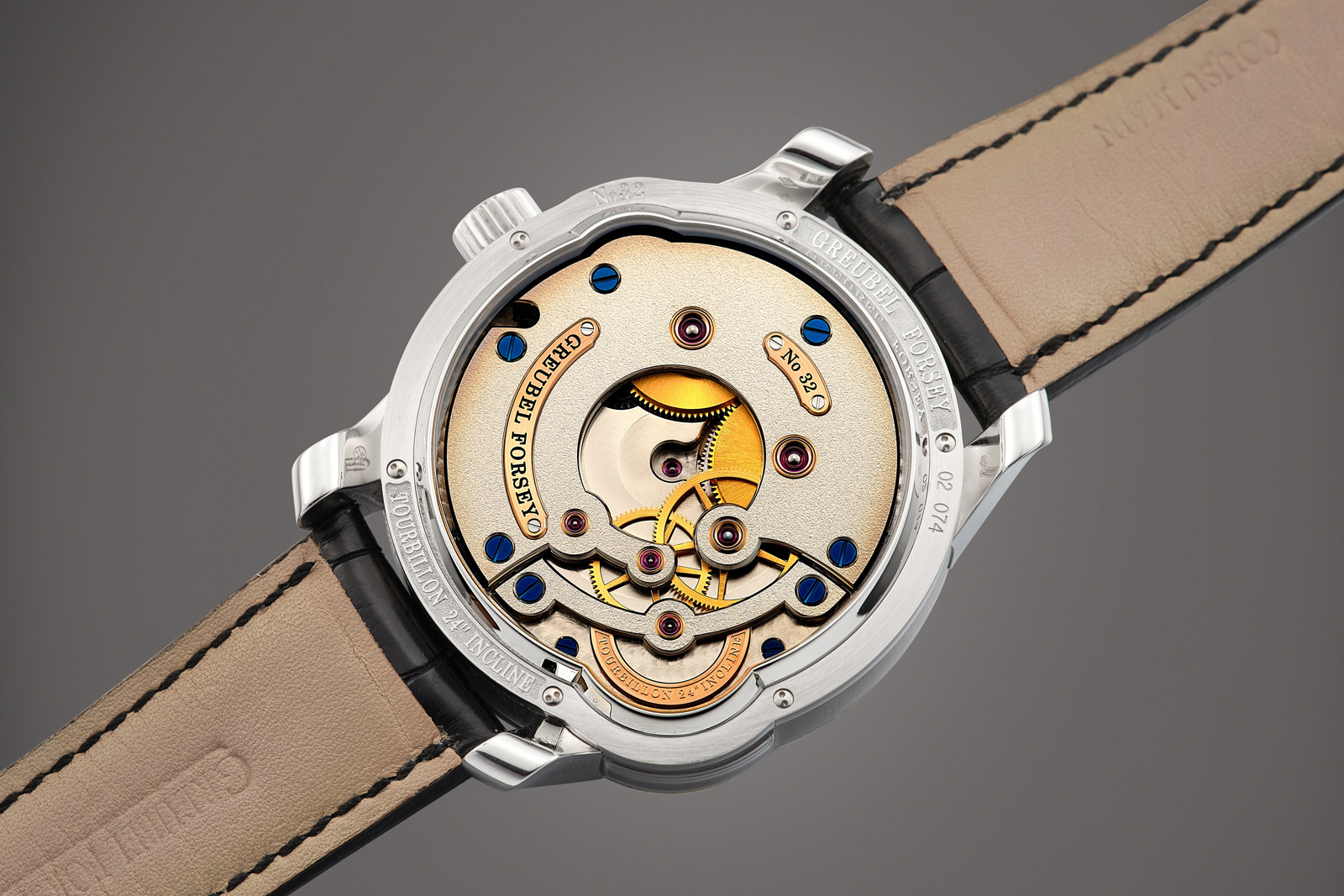
The Tourbillon 24 Secondes Incline has an estimate of HK$1.2-2 million, or about US$153,000-255,000. Find out more in the catalogue.
Lot 2162: Christophe Claret Blackjack 21
Having started out as a movement maker for brands like Breguet, Cartier, Ulysse Nardin and Bulgari, Christophe Claret slowly evolved into a watch brand itself as competing movement suppliers emerged.
His namesake brand demonstrates his unusual approach way to complications. From the pinball-inspired creation for Only Watch to Angelico with detent escapement, Christophe Claret’s offerings are almost always unconventional (and sometimes aesthetically odd). But one of his best creations for me is the Blackjack 21, a wristwatch that incorporates a trio of casino game into its movement. Featuring blackjack, dice, and roulette, this is essentially a casino on the wrist.
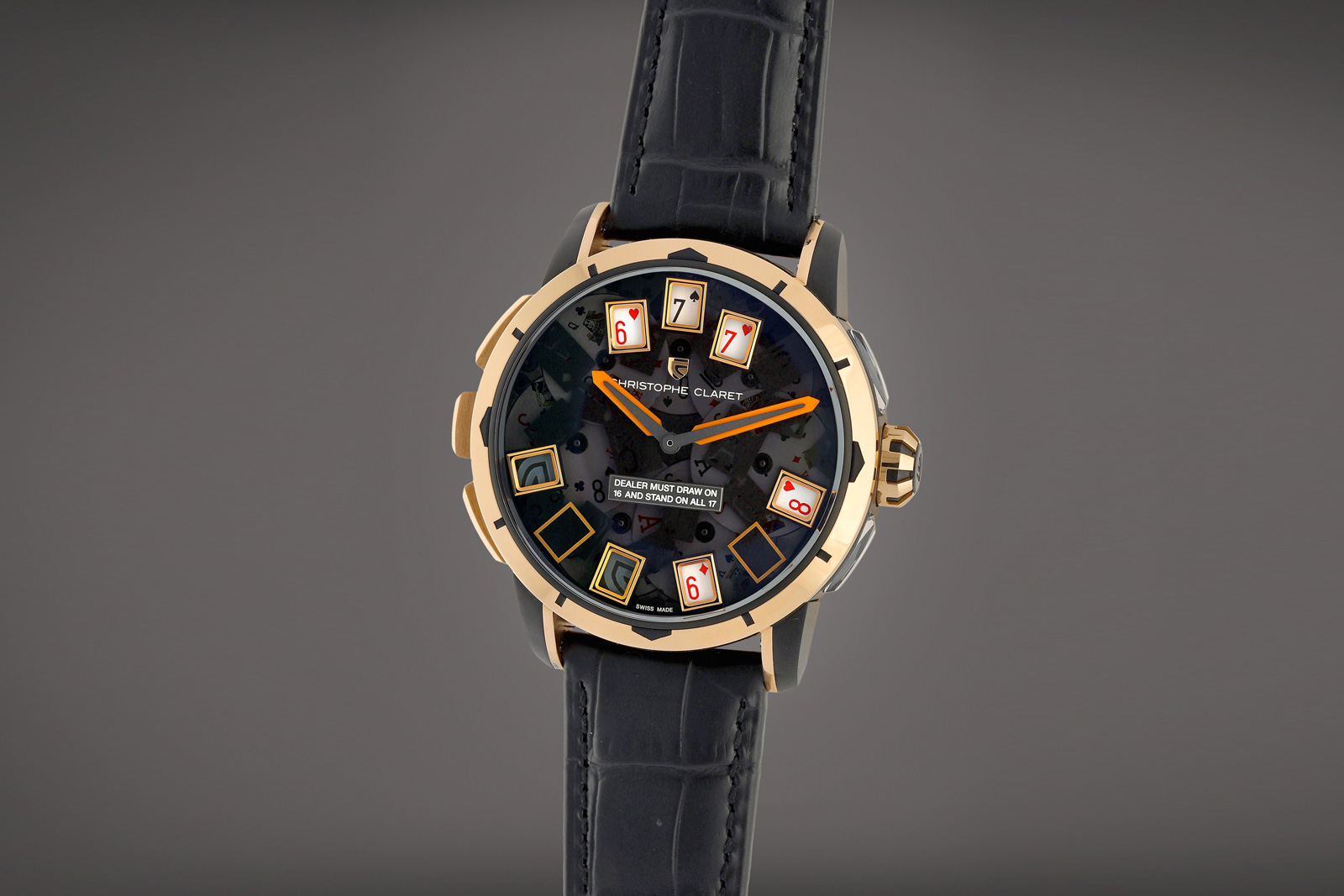
Blackjack is essentially an automaton operated via the pushers on the left of the case that randomly “deal” the cards on the dial. That’s linked to a striking mechanism with a single hammer and cathedral gong – each time a card is “dealt”, the watch strikes a single chime.
Blackjack is the only game that is the mechanical complication. Dice, on the other hand, is literally miniature dice enclosed with a small aperture at four o’clock on the case band. Playing dice is straightforward: just shaking the watch.
The roulette wheel is actually the free-spinning rotor that’s visible on the case back. Shaking the watch case causes the rotor to spin, with a black diamond pointer to indicate the number once it stops. And through the roulette wheel the cal. BLJ08 is visible.
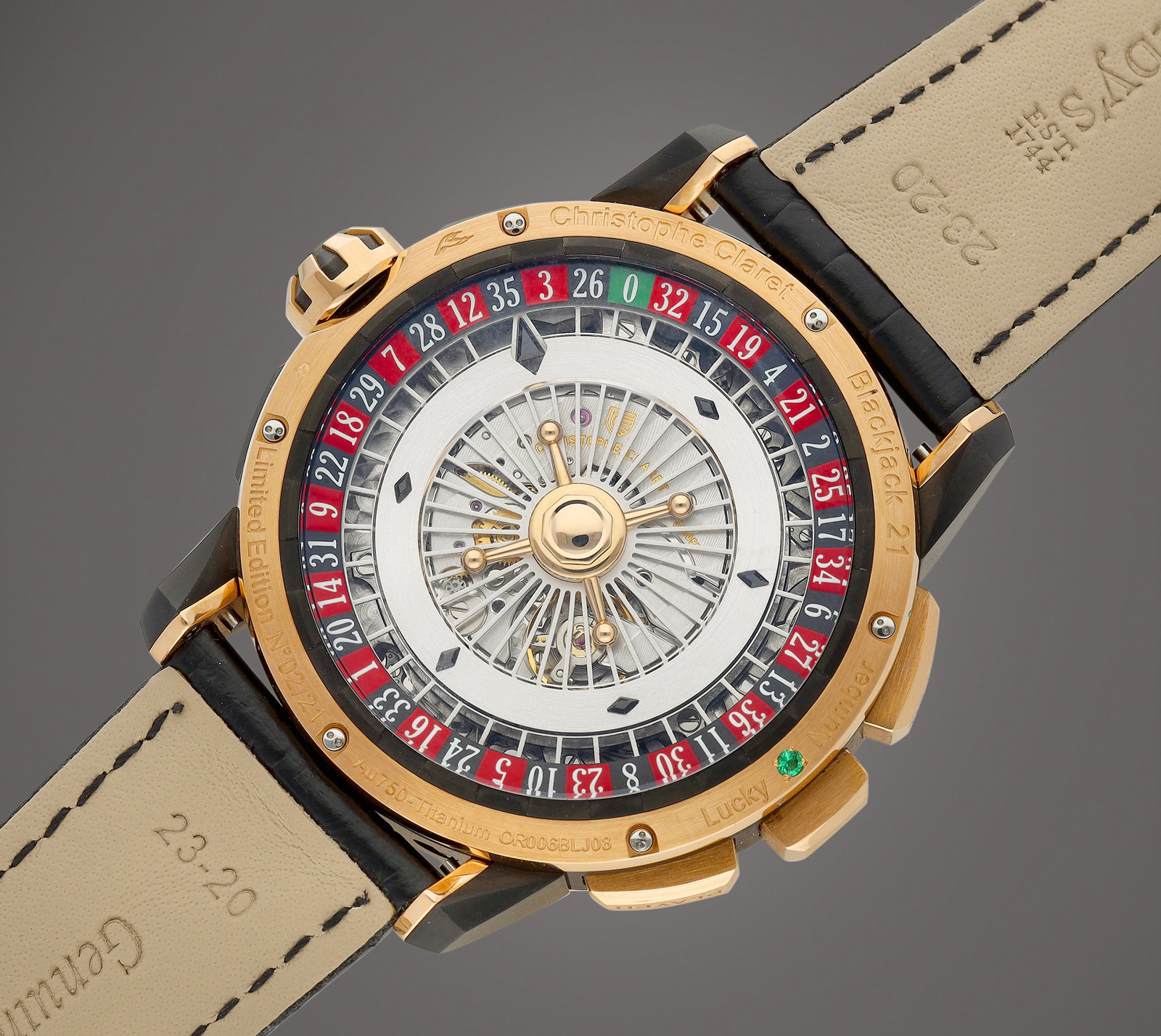
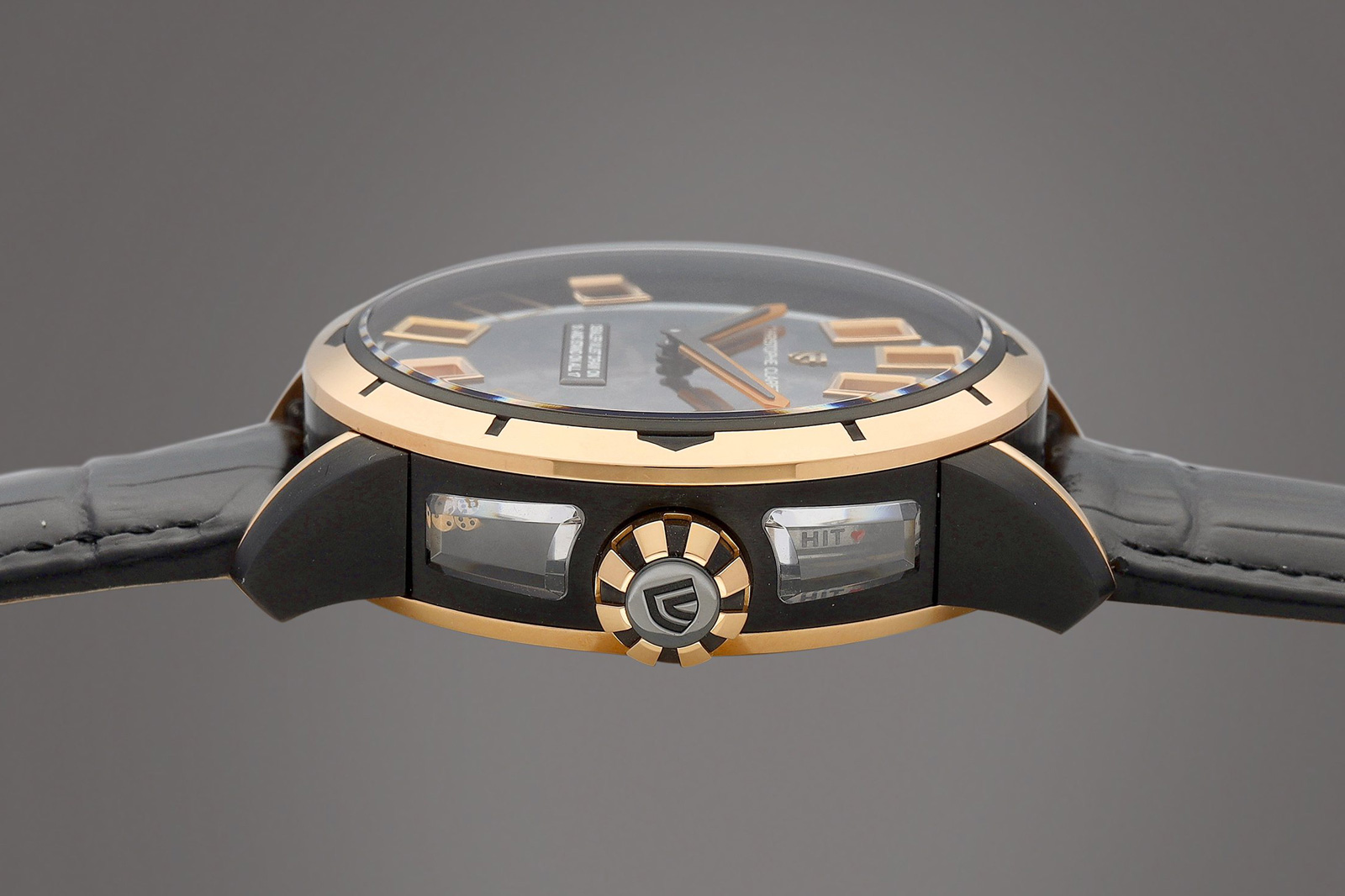
While many variants of this timepiece have been produced, this configuration with a tinted black dial and two-tone case is by far the best looking. The case is pink gold and PVD-coated titanium case and a large 45 mm in diameter.

Accompanied by its box and certificate, this Blackjack 21 is numbered “02/21”. It has an estimate of HK$320,000-480,000, or about US$40,780-61,160. For more, visit the catalogue entry.
Lot 2169: Urwerk Black Cobra UR-CC1
No history of contemporary independent watchmaking is complete without Urwerk. Established by watchmaking brothers Felix and Thomas Baumgartner and designer Martin Frei in 1997, the innovative brand has always focused on inventive time displays housed in a futuristic cases that resemble spacecraft.
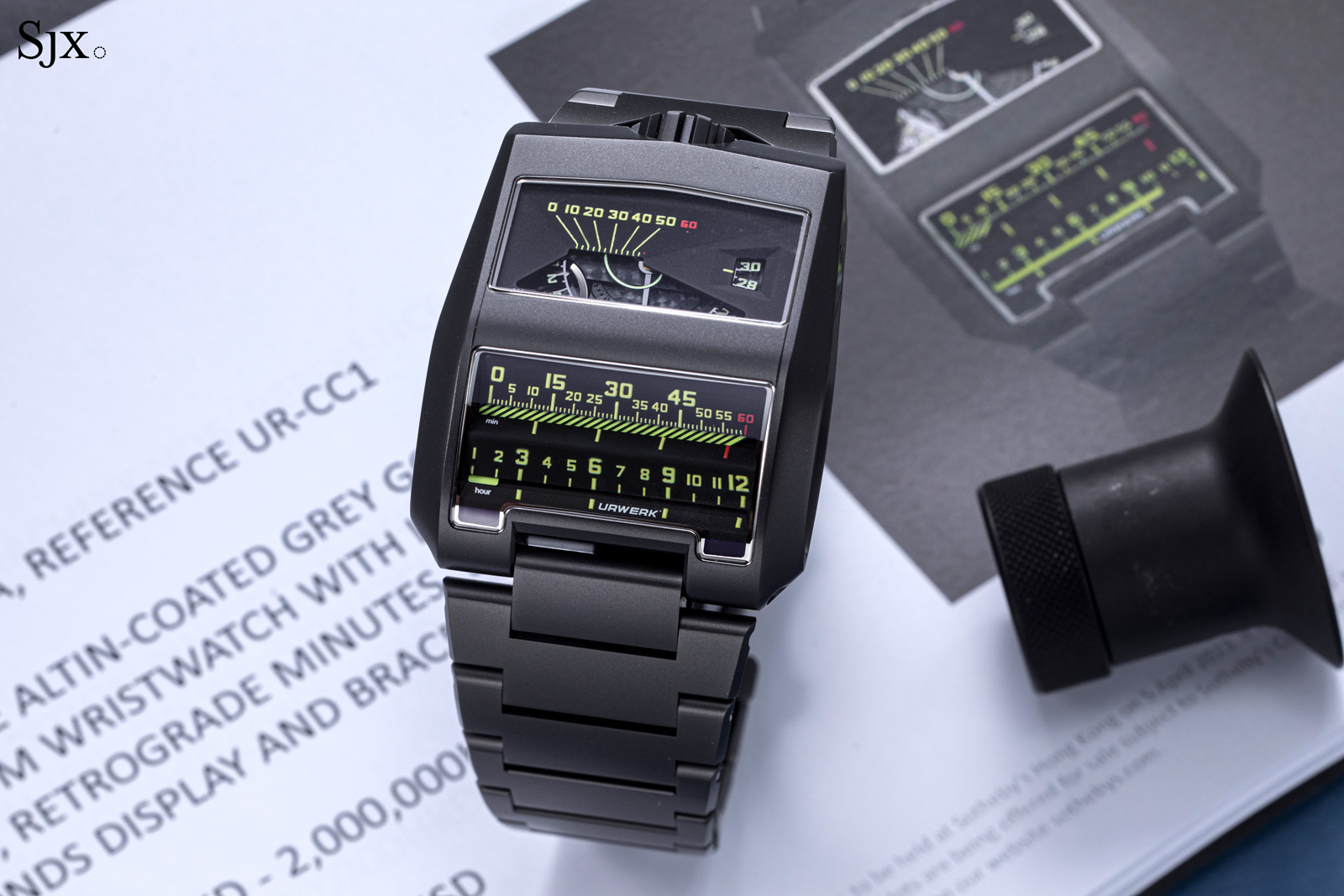
One of its most notable complications was the UR-CC1 King Cobra, a reinterpretation of the Patek Philippe ref. 3414 “Cobra”, a forgotten experimental designed by Geneva jeweller Gilbert Albert and constructed by watchmaker Louis Cottier. The key feature of the Cobra was its linear time displays, which was reproduced on the UR-CC1.
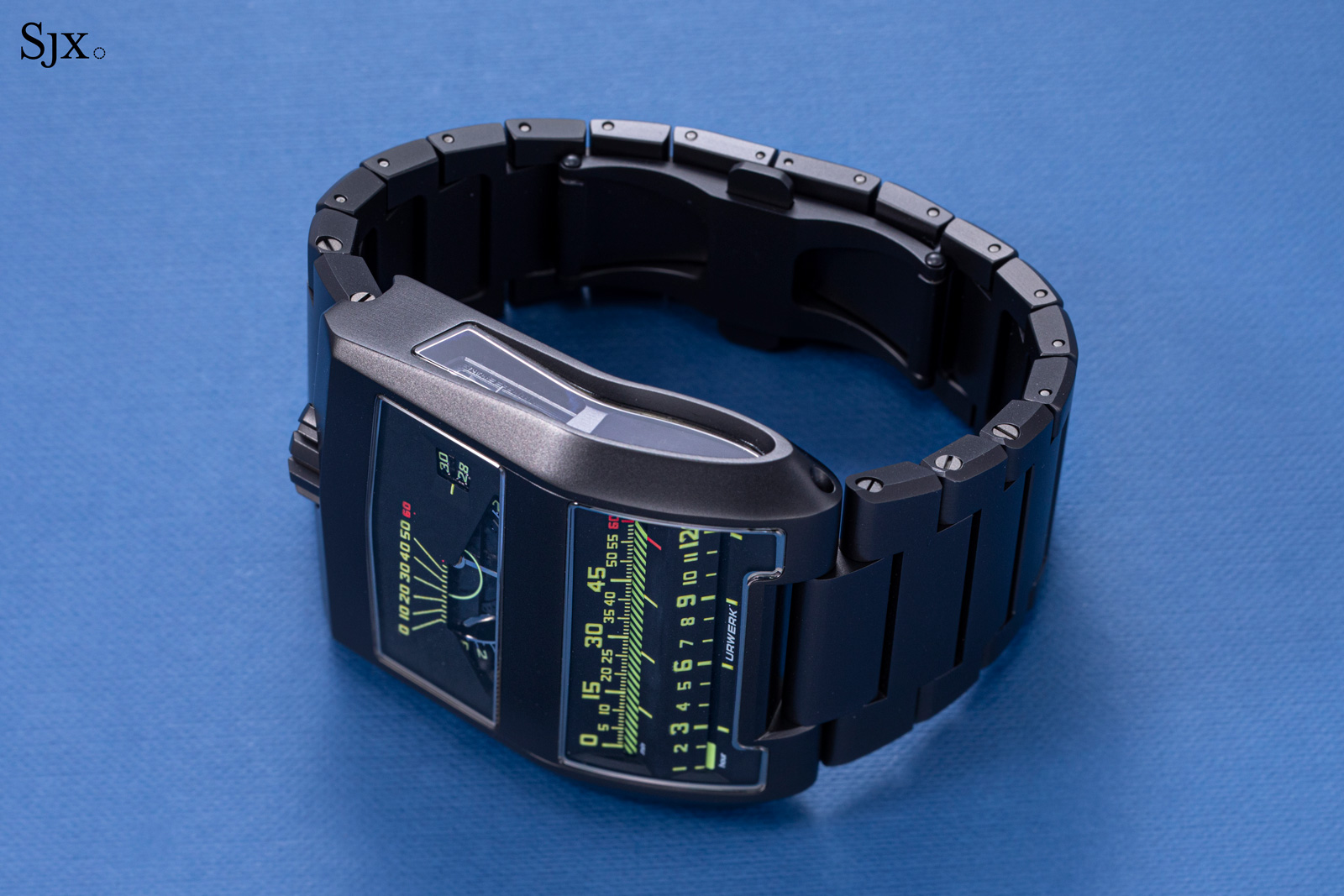
The UR-CC1 indicates the time with a pair of linear displays made up of retrograde cylinders for the hours and minutes.
The display is driven by a toothed segment at the end of a rack that slides up and down via a vertical triple cam. Each cam rotates the minute cylinder for one 60-minute cycle. The cylinder then jumps back to its original position courtesy of the extra-flat linear spring. This jump activates the jump of the hour cylinder, advancing it forward by one step.
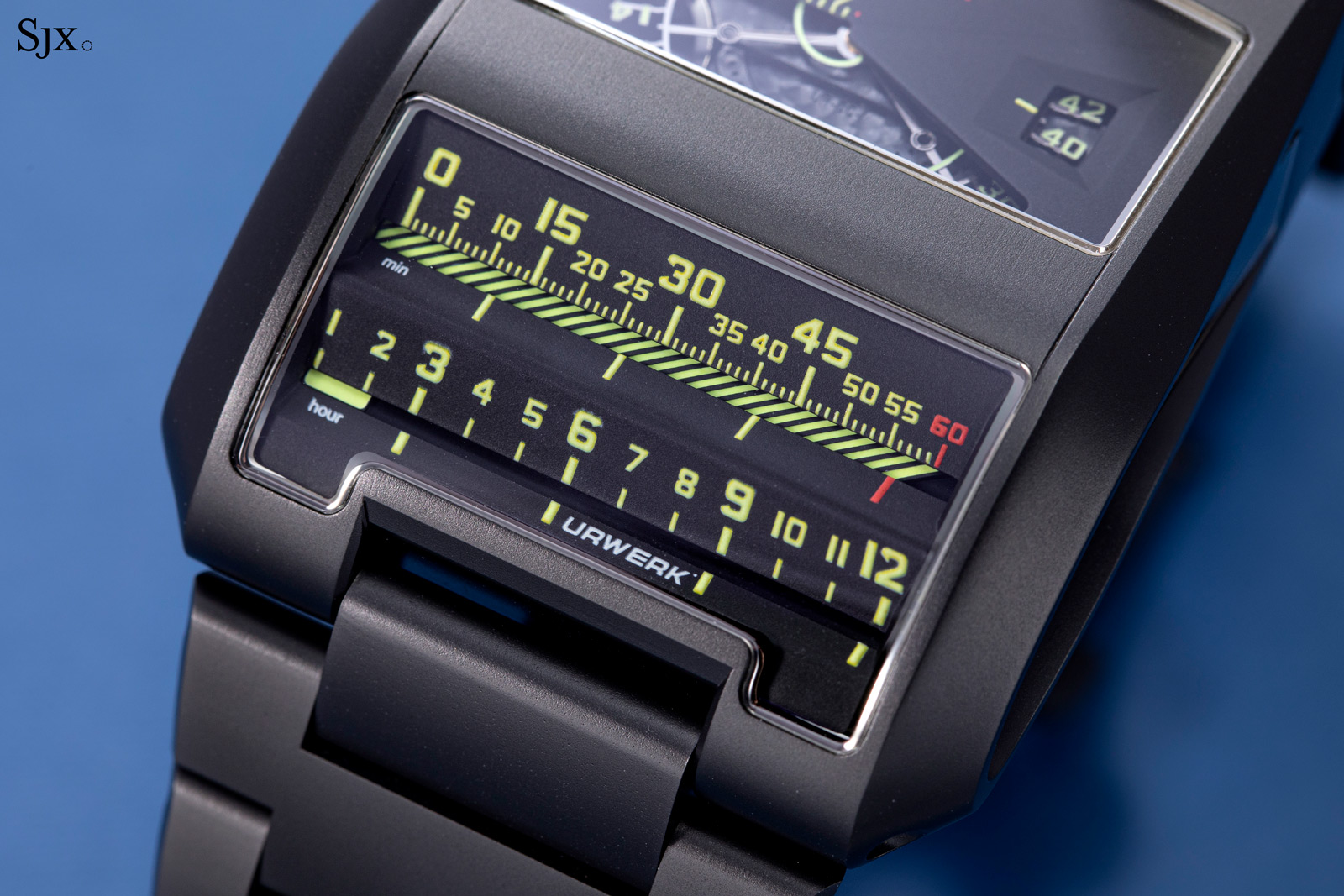
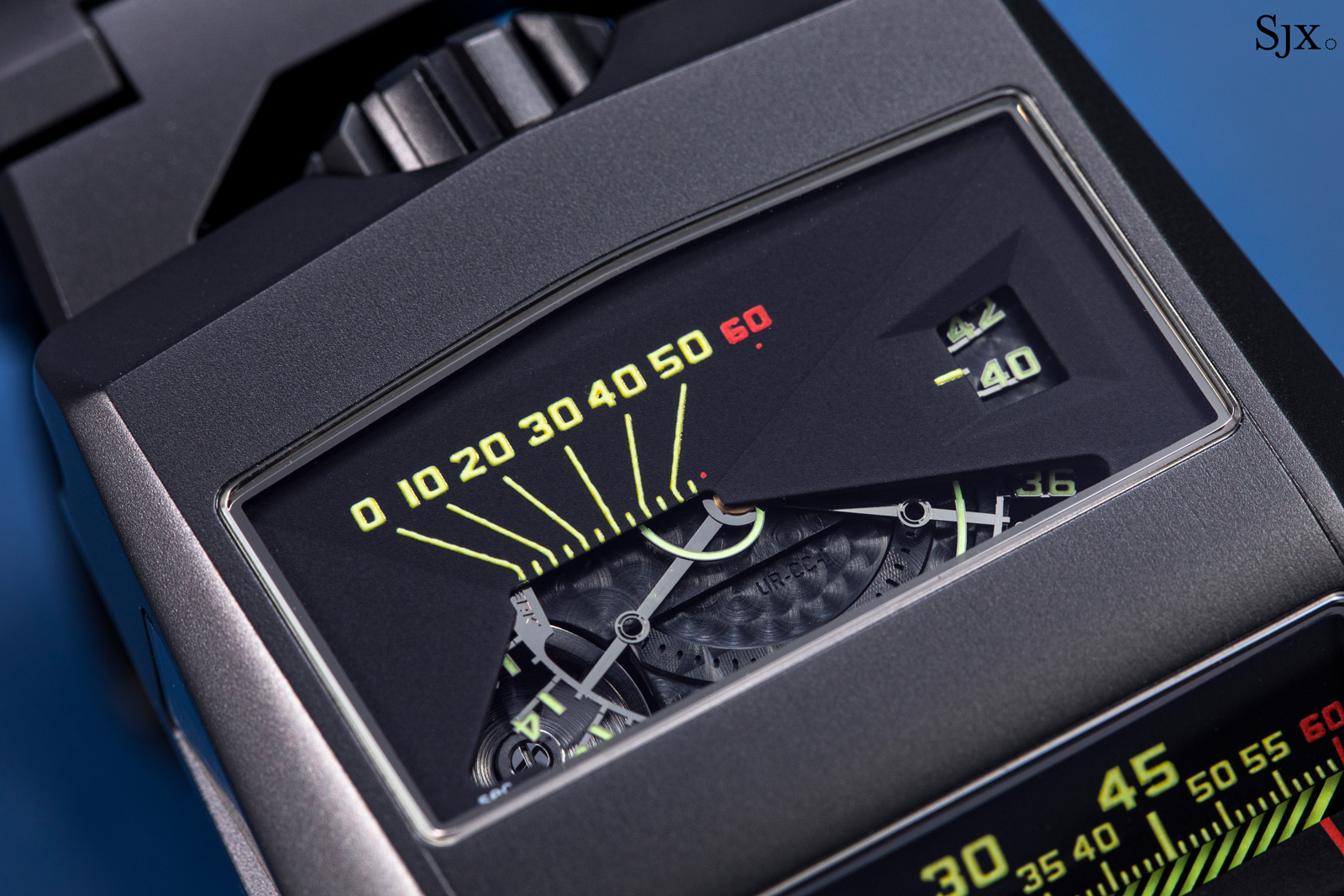
Seconds are indicated by a spiral hand

The underside of the minute cylinder is visible on the back
The example on offer is the Black Cobra, a variant of the UR-CC1 with a AlTiN-coated steel case. This watch is fitted to a matching bracelet that, according to Sotheby’s, was a special order by the previous owner. It is also accompanied by its box and certificate.
Released in 2009, the UR-CC1 cost almost US$300,000, making it prohibitively expensive at the time. Now this has an estimate of HK$1-2 million, or about US$127,400-255,000. For more, visit the catalogue entry.
Lot 2177: Philippe Dufour Simplicity 34 mm
Widely considered the greatest movement finisher ever, Philippe Dufour’s most recognisable watch is the Simplicity. Much loved for its gorgeous movement decoration that has yet to be rivalled, the watch has clean, elegant lines.
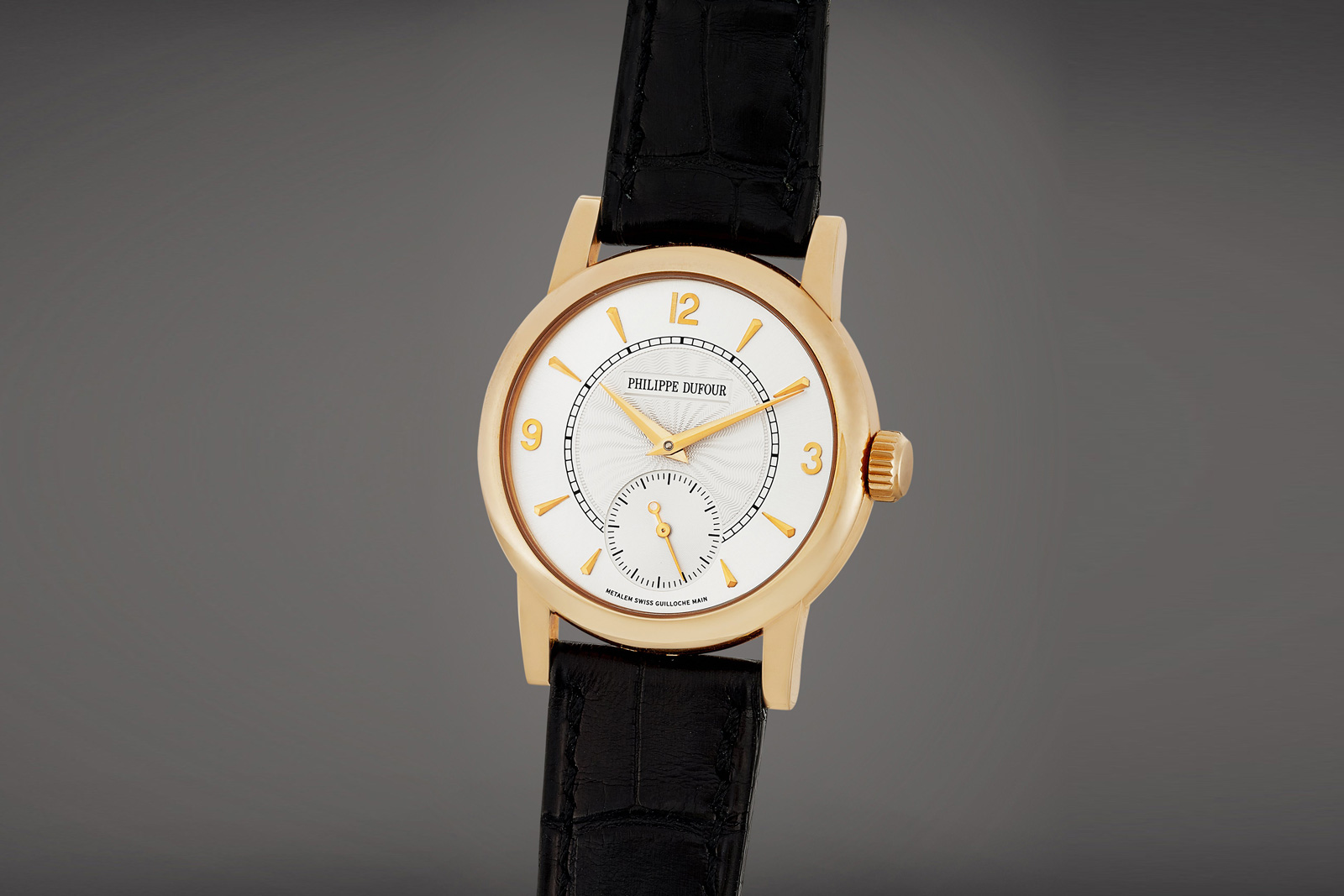
This example is pink gold and 34 mm, giving it a warm, vintage feel. It has a silvered guilloche dial featuring Arabic numerals at the quarters.
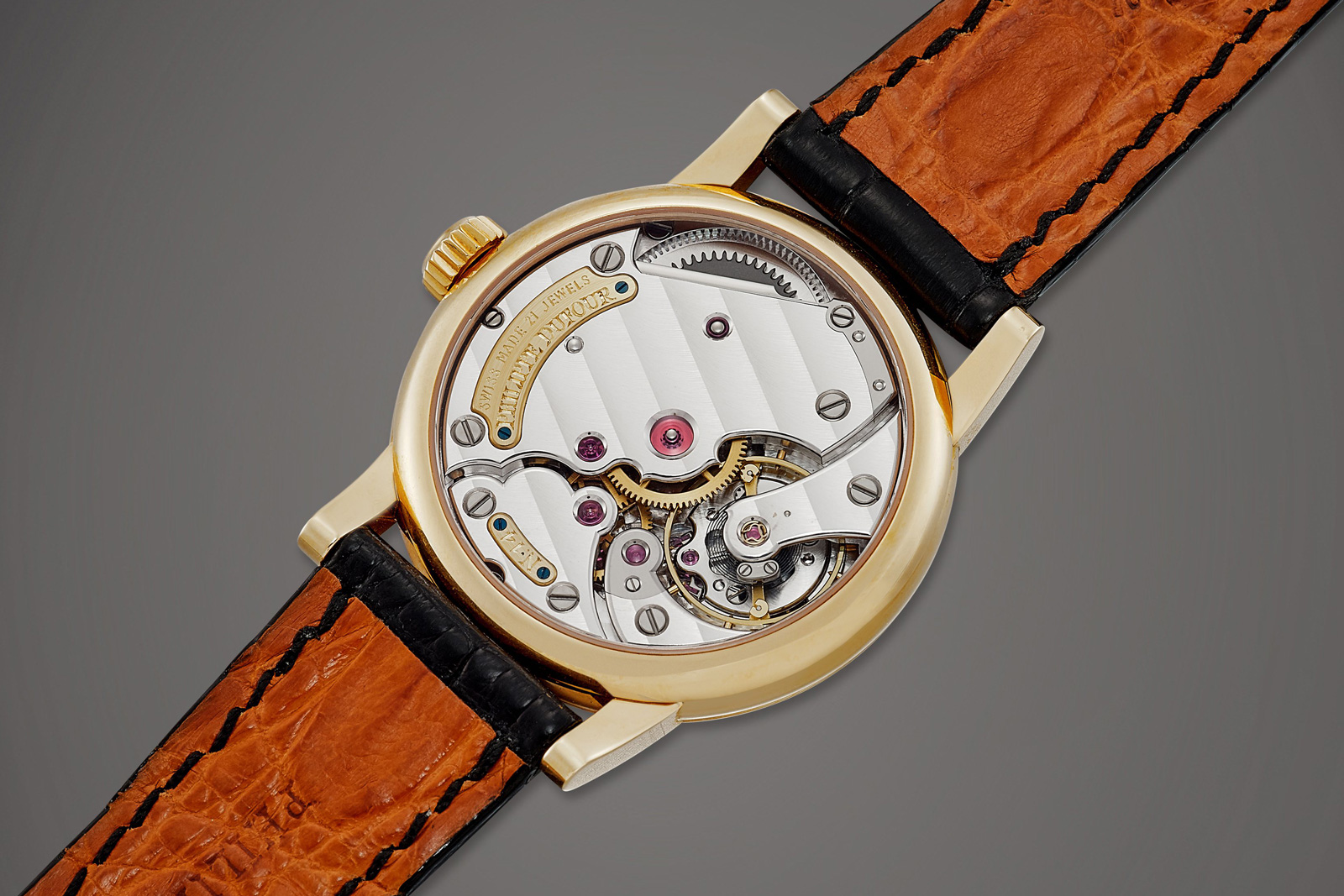
Though 34 mm is small by current standards, traditionalists often seek out the Simplicity 34 mm, since it is both the size worn by Dufour himself and also the rarer of the two sizes (the other being 37 mm).
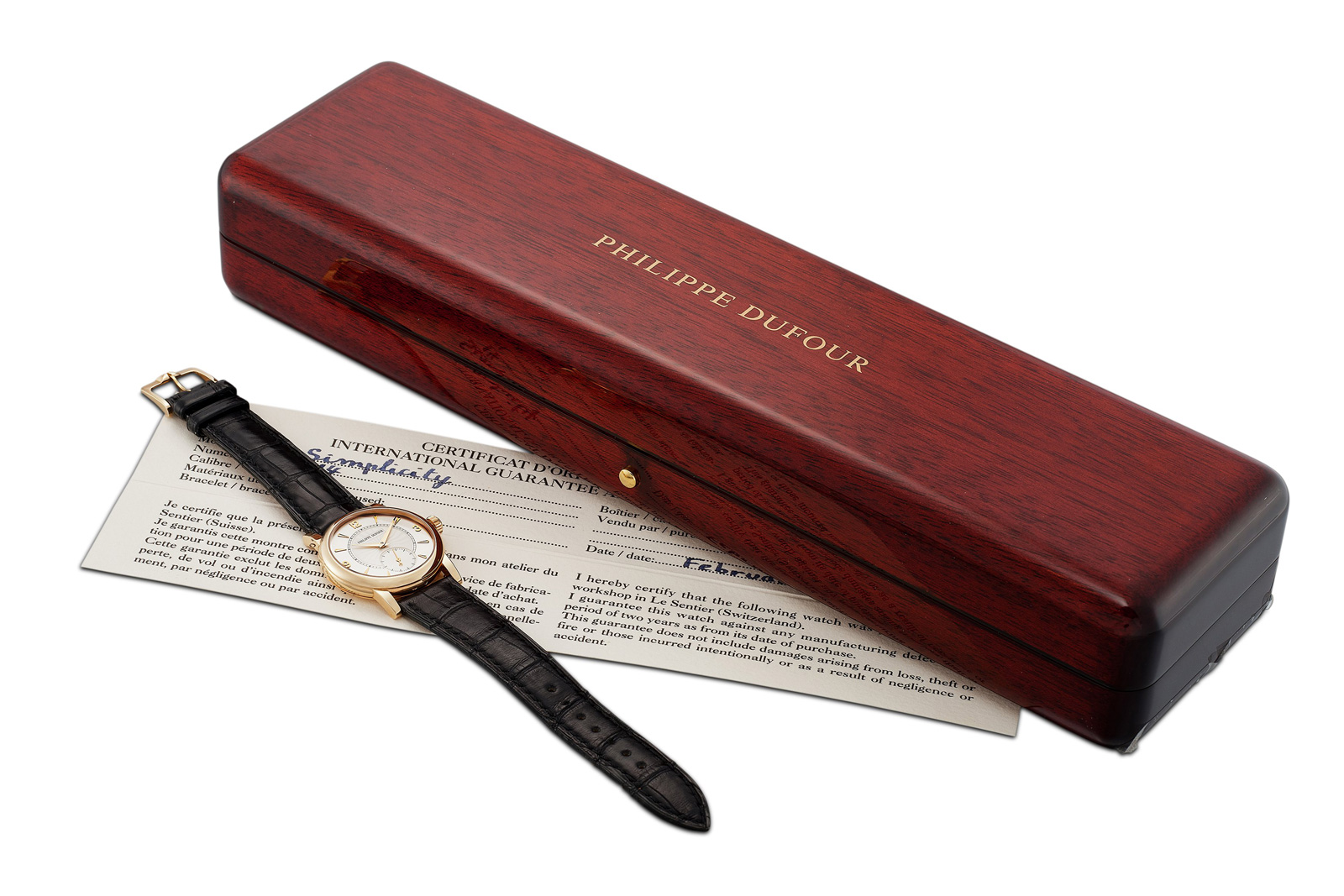
Numbered “14”, the present example was delivered in 2002, making it one of the earliest known examples from the original run of 200 watches. It includes the original certificate and wood box. The estimate is HK$4-6 million, or about US$510,000-764,400.
Full lot details here.
Lot 2180: F.P. Journe Octa Automatique Lune “France-China 50”
F.P. Journe is now as hot as an independent watchmaker can be, with early examples of his trademark complications, namely the Resonance and Tourbillon Remontoir d’Egalite, achieving record prices at auction.
But the brands still has a few rare but overlooked model, such as this Octa Automatique Lune made to commemorate the golden jubilee of diplomatic relations between France and China in 2014.
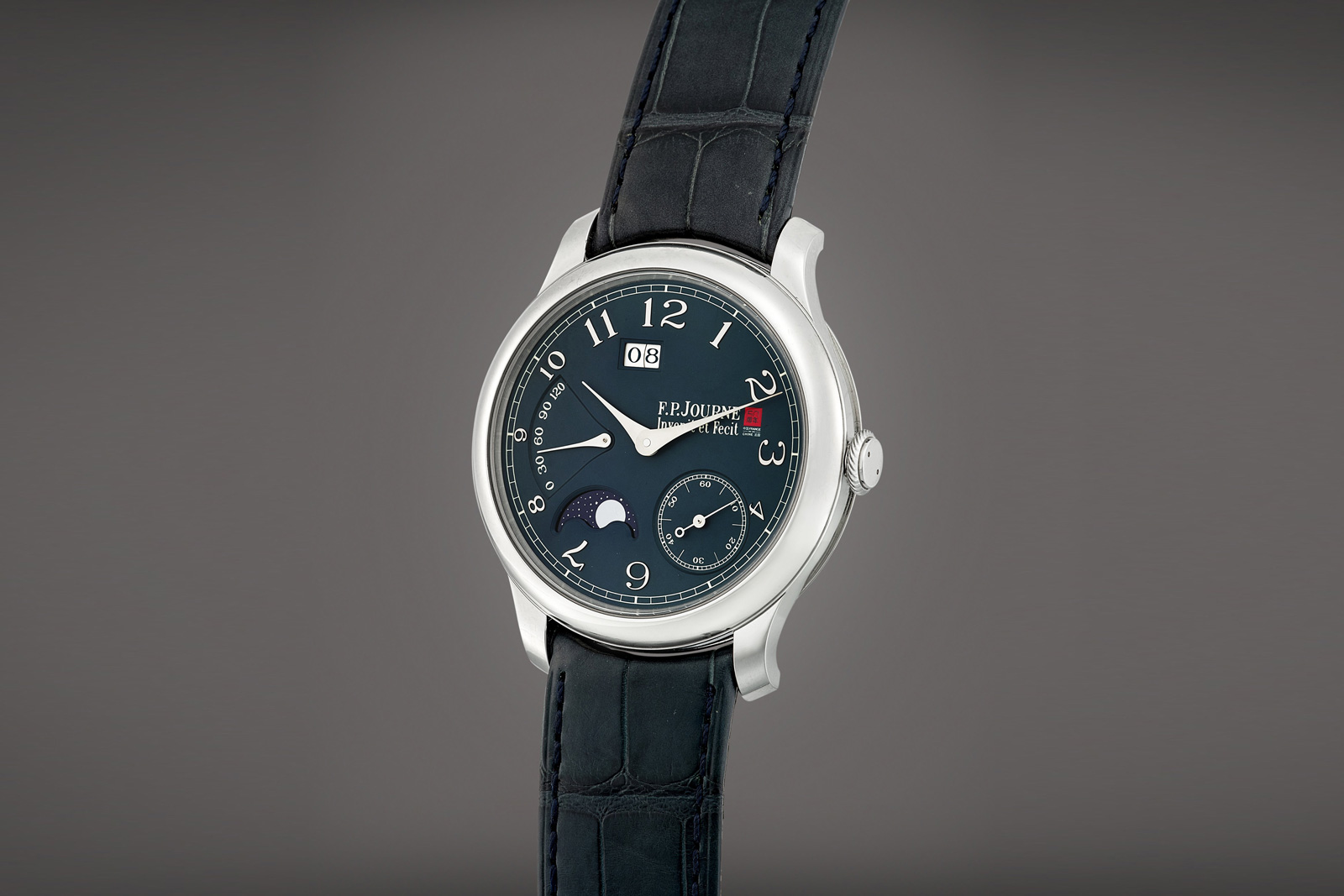
Just 50 of these were made, all featuring a dial in dark blue, an uncommon shade for F.P. Journe. And the dial gains a bit of colour from the commemorative emblem discreetly positioned next to the logo at three o’clock.
The emblem is made up of the names of both countries, each written in their respective languages, with a red box resembling a traditional seal sitting just above. The red square contains”50周年”, or “50th anniversary” in Chinese.
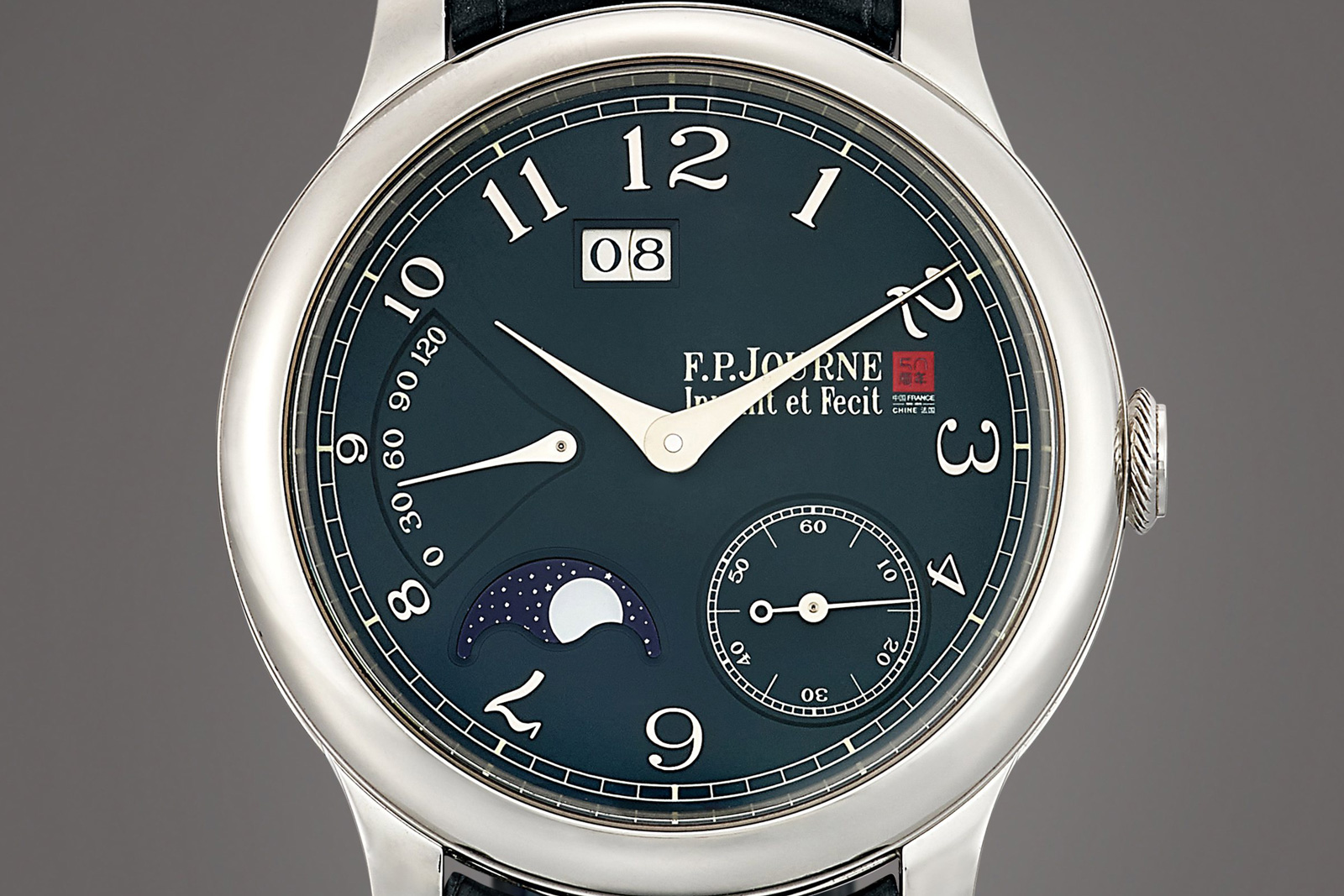
Housed in a 40 mm platinum case, this Octa Automatique Lune is powered by the cal. 1300.3 automatic movement found in the standard model.
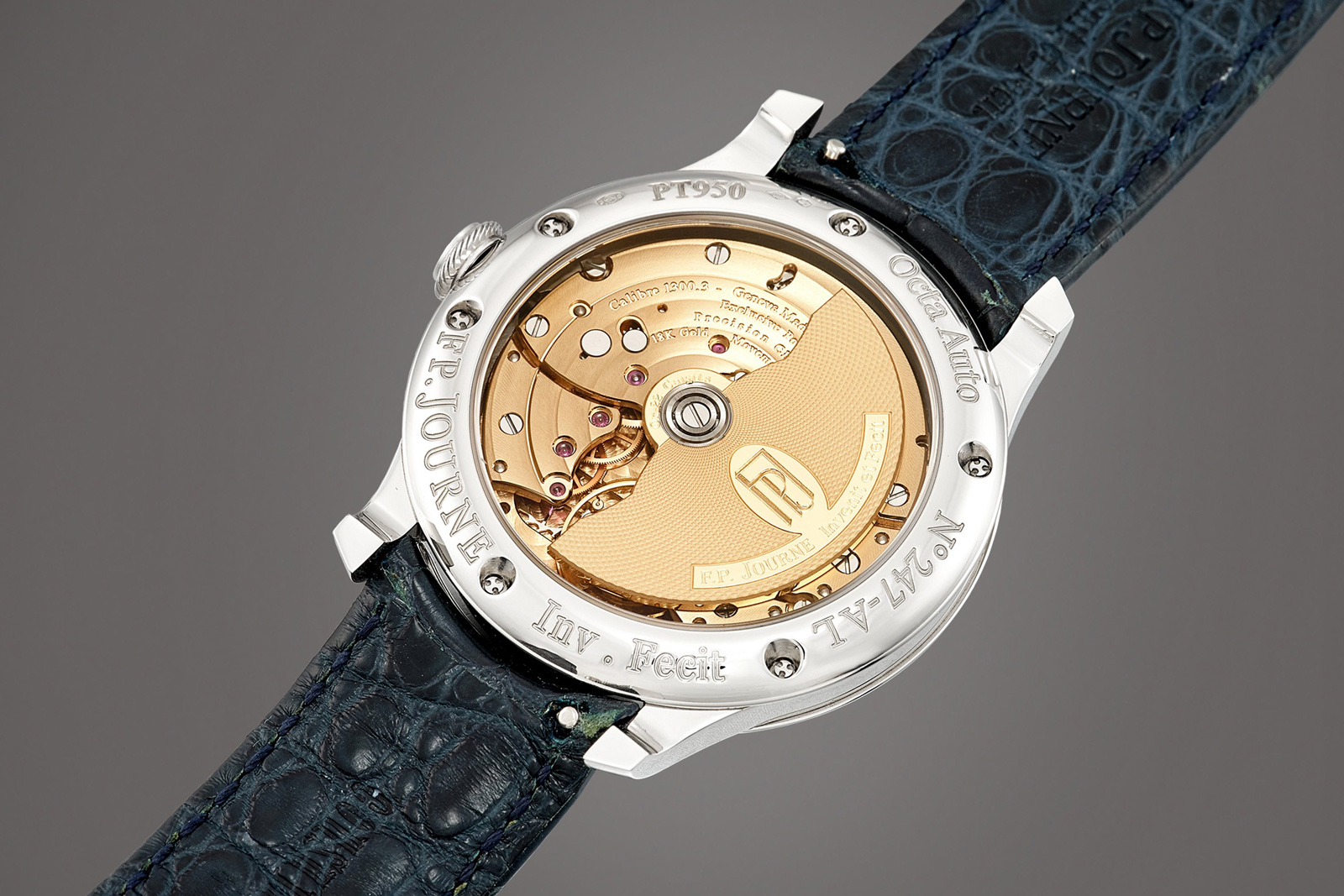
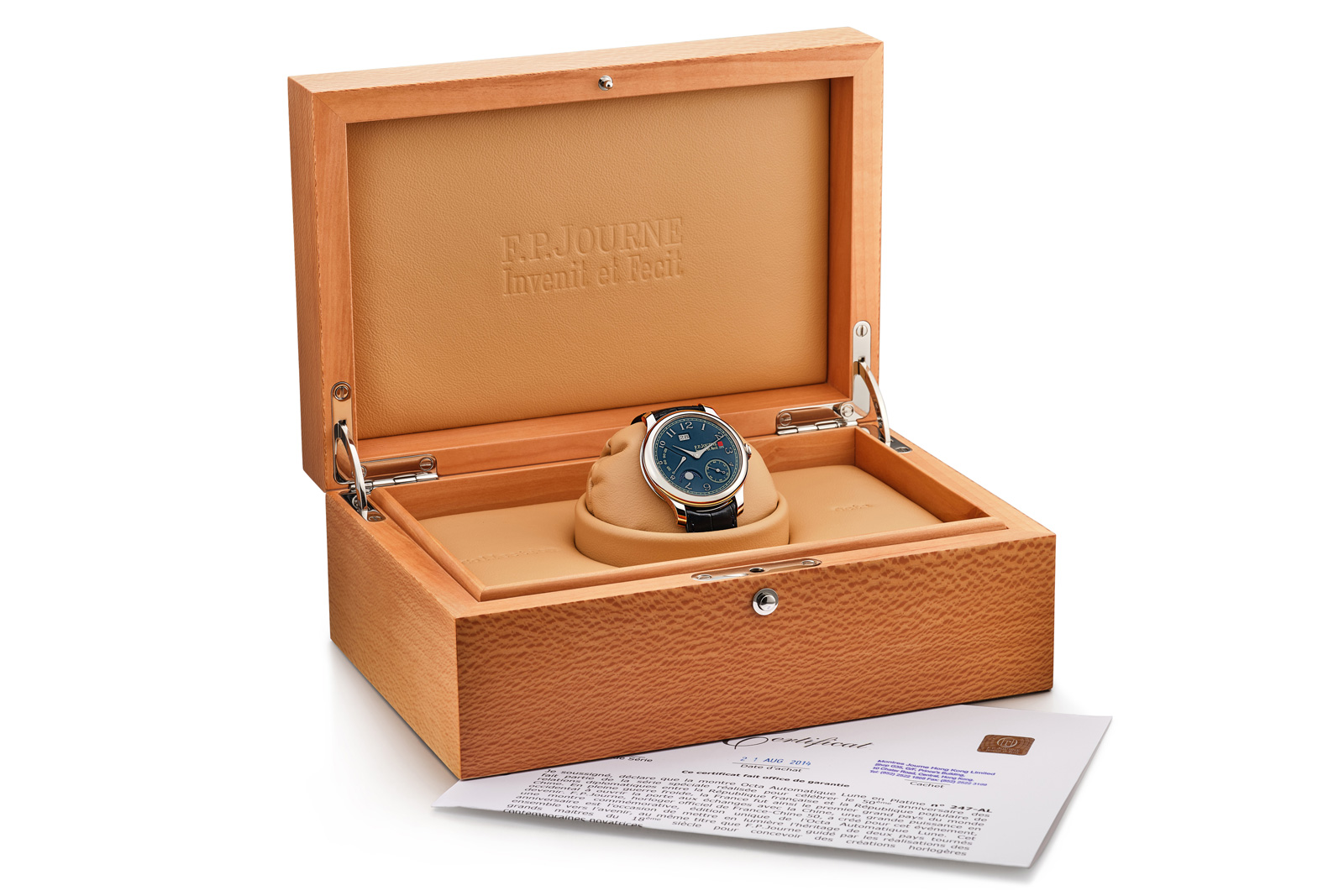
This watch includes with its wooden box along with the guarantee certificate. It has an estimate of HK$800,000-1 million, or around US$102,000-153,000.
Full lot details here.
Lot 2307: Richard Mille Bonbon RM 37-01 “Cerise”
Less complication and artisanal than most of the prior picks, but certainly more whimsical than even the Genta Mickey, is the RM 37-01 “Cerise”. Part of the the Bonbon collection launched in 2019, the Cerise is typical Richard Mille – fun, loud, and expensive.
The Bonbon collection was a line of ladies’ watches centred on candy and fruit-themed motifs that was conceived to broaden the brand’s reach to include a younger, female demographic. French for “cherry”, Cerise has candies on the dial and hot pink strap.
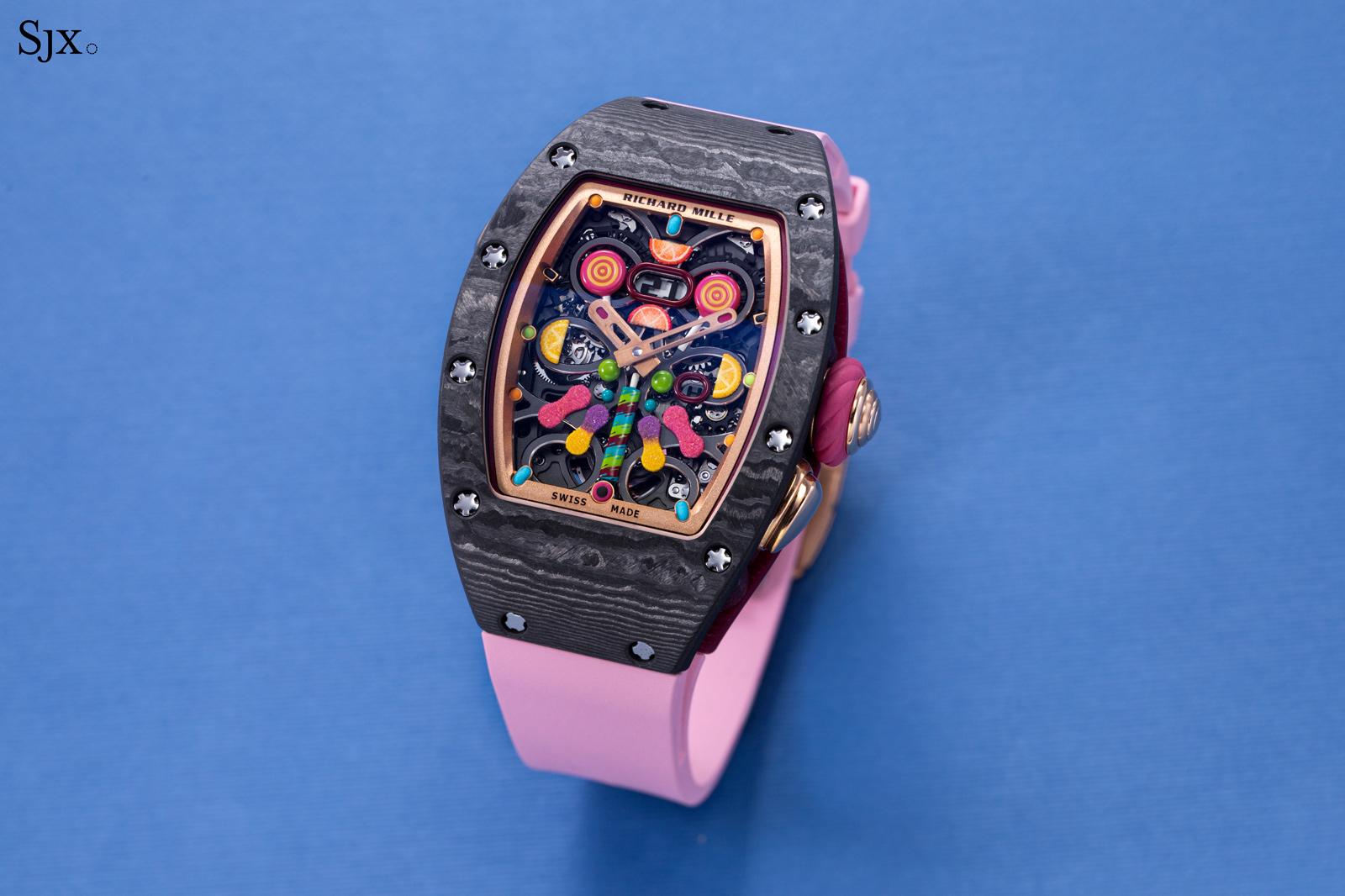
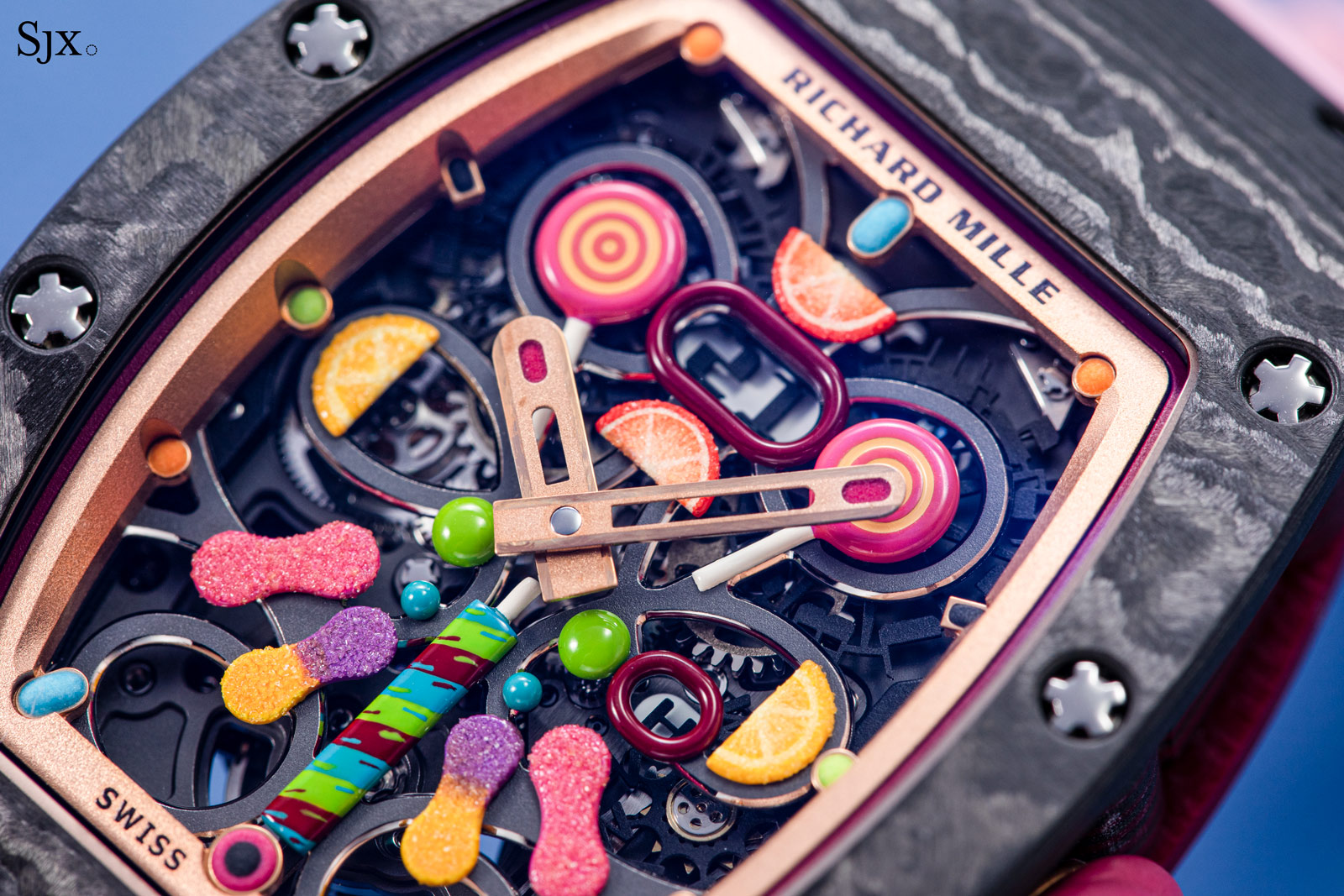
Like other models in the Bonbon collection, the Cerise features a semi-skeletonised dial with appliqués taking the form of candies and fruits. The appliqués are naturally hand-painted in acrylic and varnished with a “powdered sugar” lacquered finish.
The Cerise is powered by the CRMA1, an in-house automatic movement, while the case is two types of carbon composite – black on the front and cherry-coloured on the back.
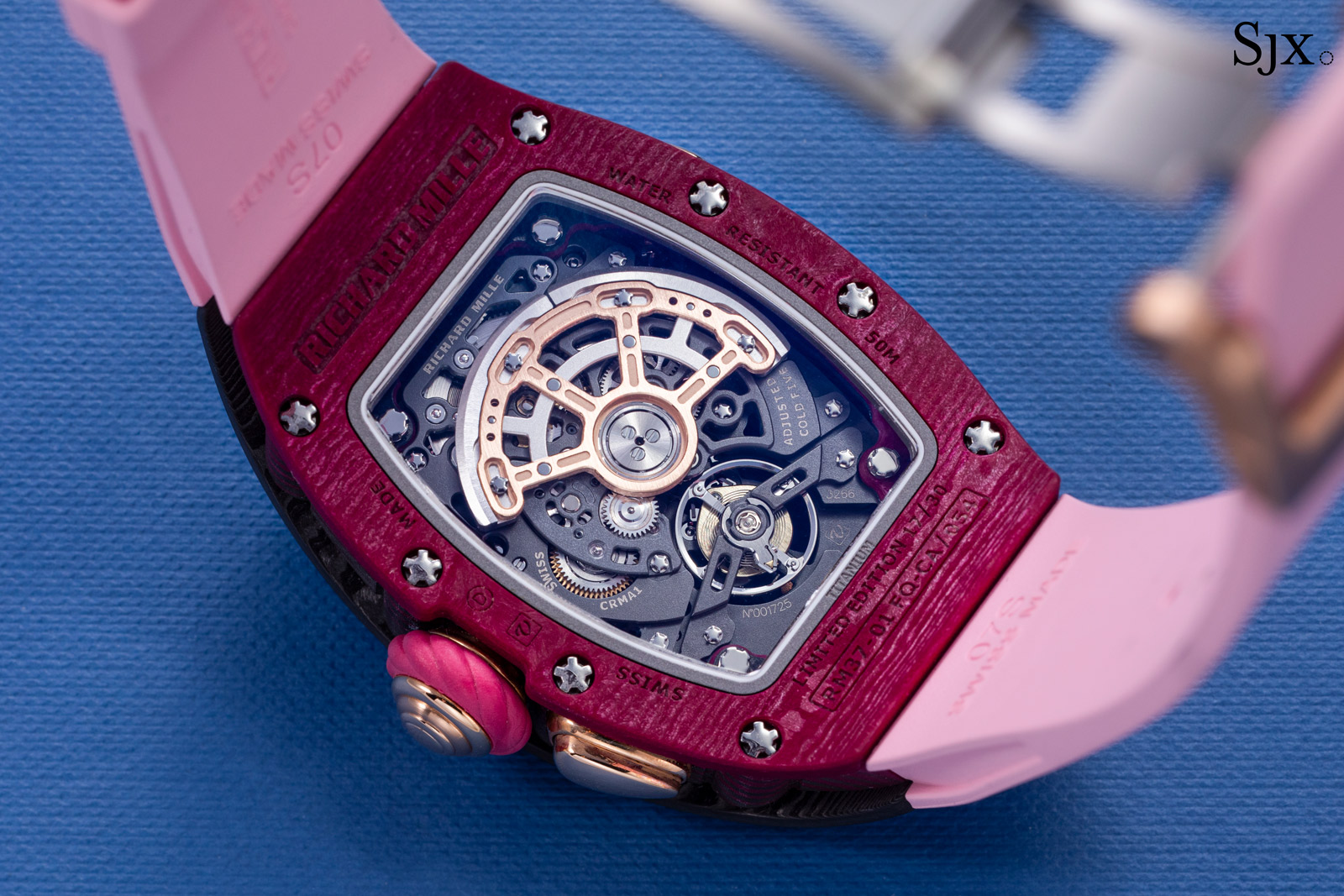
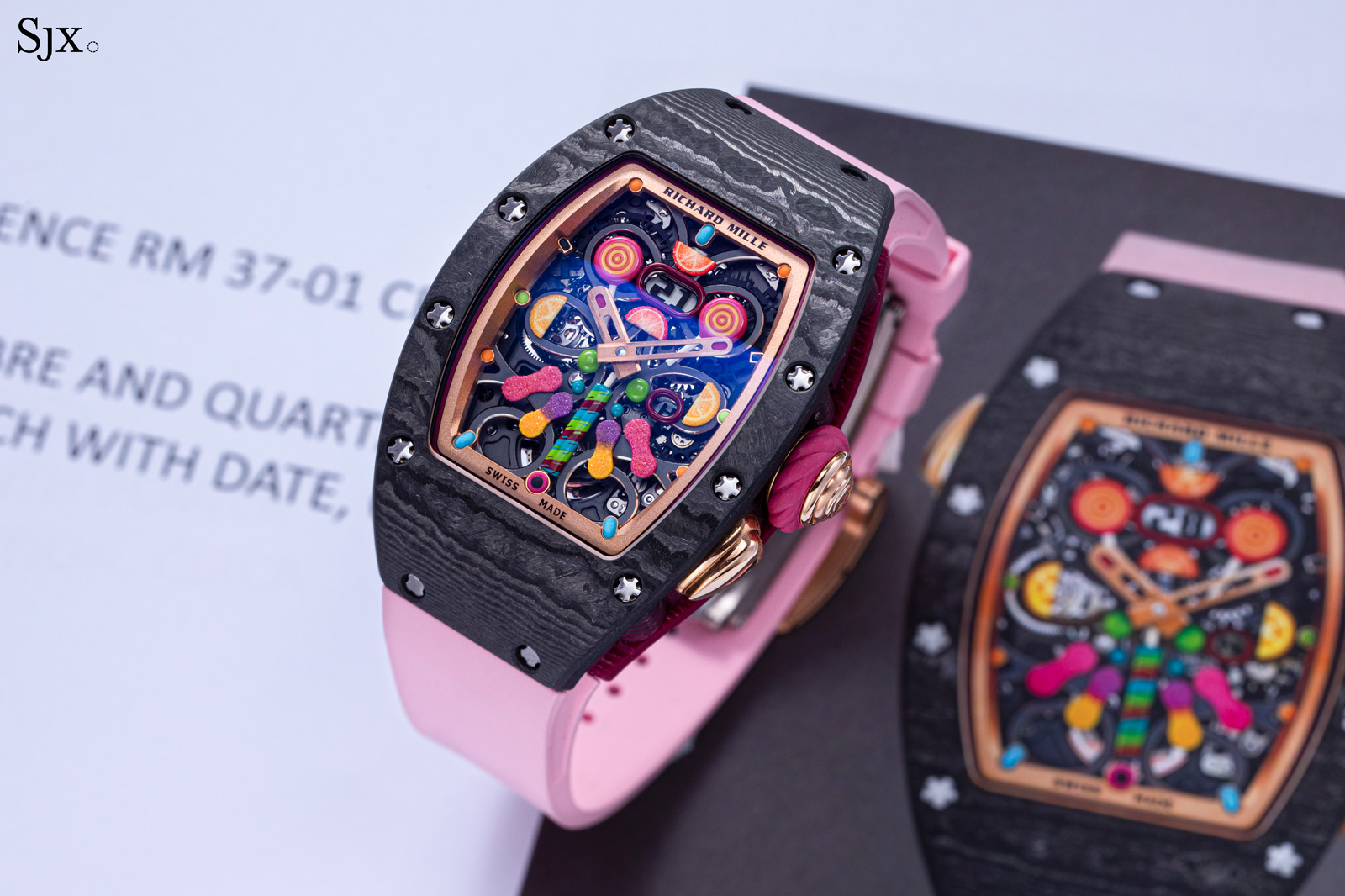
Accompanied by only its presentation box, this RM37-01 is numbered “17/30”. It has an estimate of HK$2.4-3.2 million, or about US$306,000-408,000.
For more, check out the catalogue.
Preview and auction details
All lots will be on show during the preview in Hong Kong during the run-up to the auction. Both the preview exhibition and sale will happen at the Hong Kong Convention and Exhibition Centre (New Wing).
Preview
April 1-4
Auction
April 5, 10:00 am
Hong Kong Convention and Exhibition Centre (New Wing)
1 Expo Drive
Wanchai
Hong Kong
For the full catalogue, as well as viewing appointments and online bidding, visit sotheby’s.com.
This was brought to you in collaboration with Sotheby’s.
Back to top.
